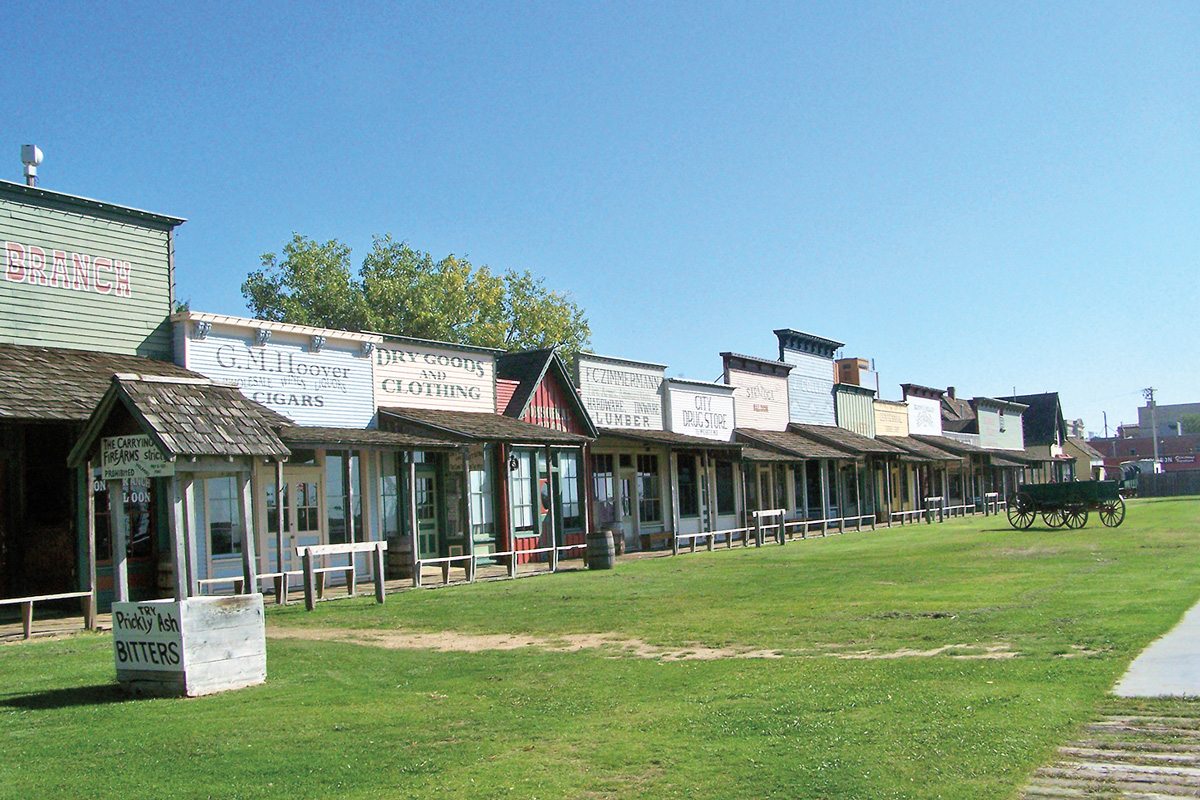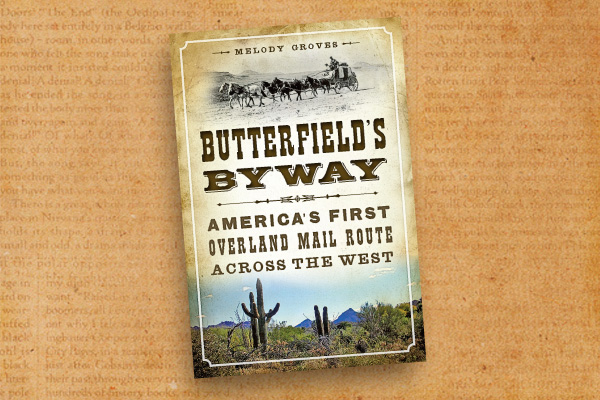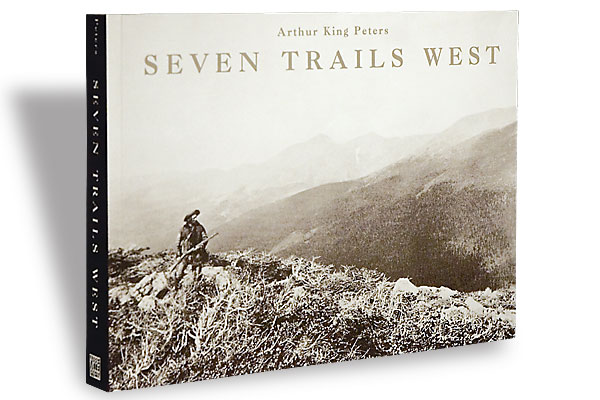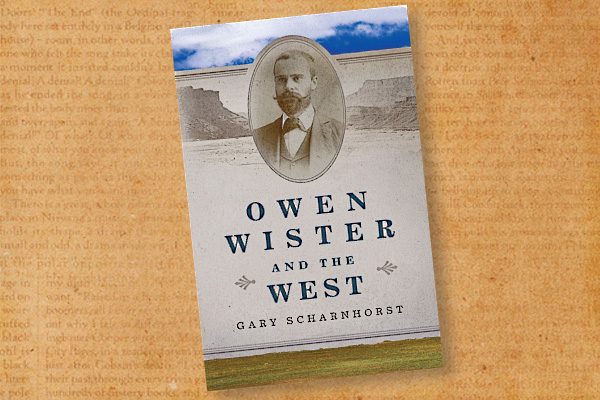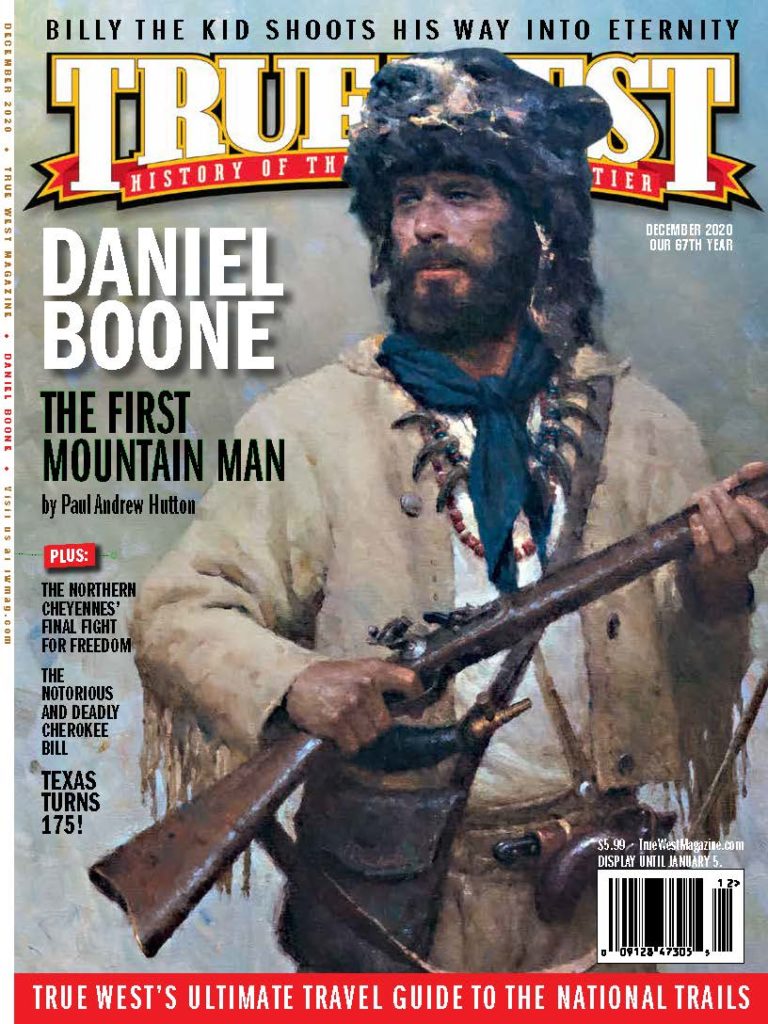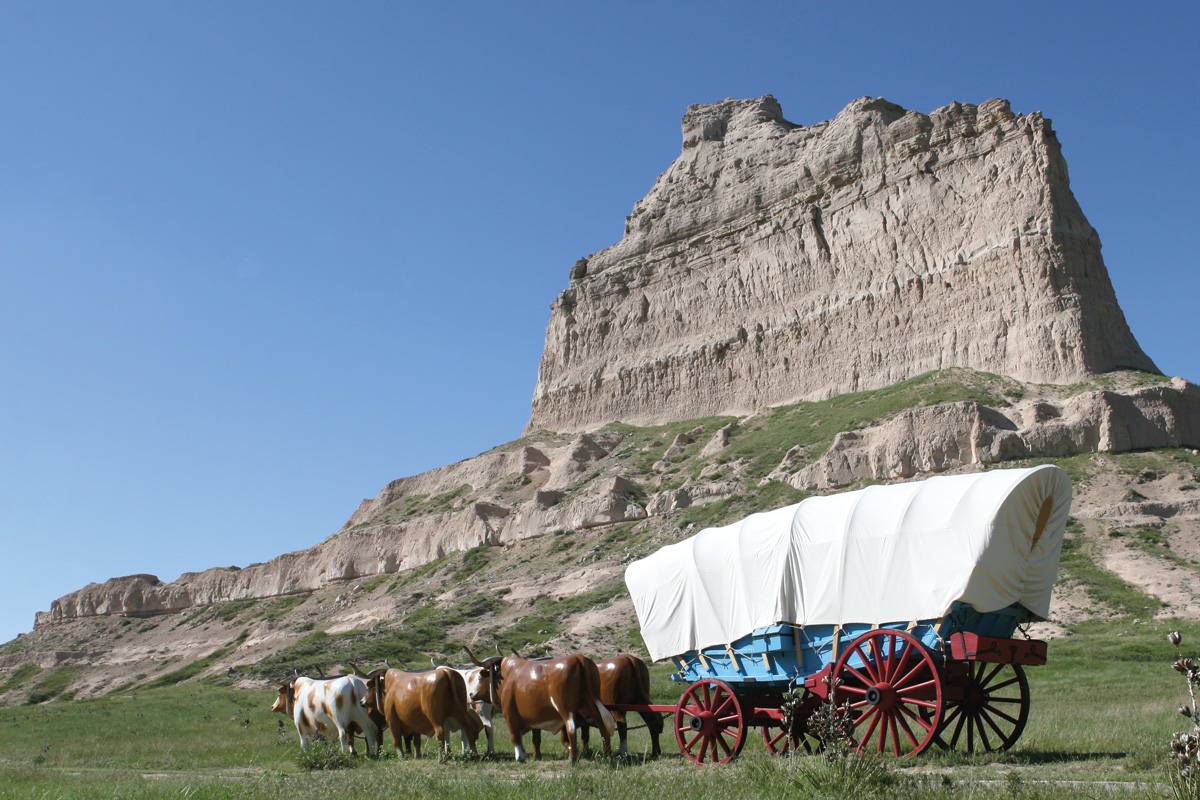
– Courtesy Nebraska Tourism –
On Christmas Eve, December 24, 1805, Lewis and Clark’s Corps of Discovery settled into Fort Clatsop. They would spend their final winter encampment a few short miles from the Pacific Ocean and the mouth of the Columbia River before returning east to St. Louis in late March 1806. The Corps’ extraordinary survey of the West changed the course of history for the youthful United States of America and was an inspiration to Western trailblazers who followed their example the rest of the century.
Today, 215 years after the Corps’ historic encampment at Fort Clatsop, the Western United States remains an international destination for exploration. Visitors come from around the world to journey deep into its wild places, explore its wide open spaces and follow historic trails, scenic byways and back-country hiking trails to discover for themselves the history, people and places that define the West.
Fortunately for Western travelers, the National Park Service and multiple public and private agencies, trail associations and individuals have worked hard for more than a century to mark, honor and interpret the great historic trails of the West. Many, including the Lewis and Clark, Santa Fe, Oregon, California, Mormon Pioneer and Pony Express, have been designated by Congress as National Historic Trails. Others, such as the Chisholm, Western, Goodnight-Loving and Butterfield Overland trails, have been nominated or are in the process of being nominated for National Historic Trail designation. In addition, federal and state governments have developed scenic byway systems that guide travelers through and to some of the wildest and historically most interesting places in the West.
In the spirit of Lewis and Clark’s Corps of Discovery, True West’s editors hope that the following historic trails—and the wonderful towns, sites and places ready to be enjoyed along their routes—will inspire years of adventures of discovery across the West. As Meriwether Lewis recounted over two centuries ago, “As we passed on, it seemed those scenes of visionary enchantment would never have an end.”
The Lewis and Clark Trail
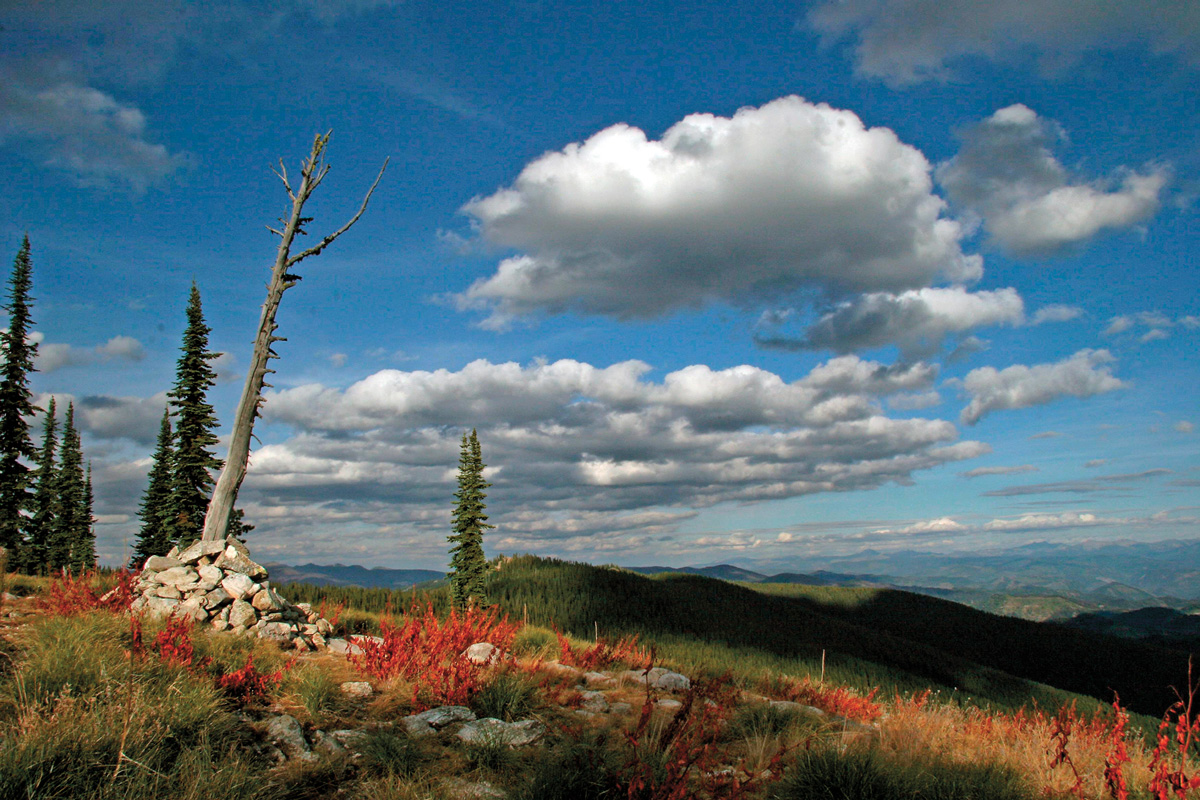
Nez Perce guide Old Toby led them over the Lolo Trail. As they traveled,
they passed the landmark, Indian Post Office. – All Photos in the Lewis and Clark National Historic Trail Story Courtesy NPS.gov Unless Otherwise Noted –
Lewis and Clark National Historic Trail
Headquarters and Visitor Center
601 Riverfront Drive
Omaha, NE 68102
402-661-1804
NPS.gov and LewisAndClark.Travel
On December 8, 1805, Meriwether Lewis and WIlliam Clark’s Corps of Discovery settled into their chosen winter campsite nestled in the woods a few miles southwest of the mouth of the Columbia River in northwest Oregon. The Corps had been on their expedition across the United States’ newly acquired Louisiana Purchase since May 14, 1804, when they left Camp Dubois near Wood River, Illinois. It took them over three weeks to finish their rough-hewn log encampment they named Fort Clatsop in honor of the local Indians. While the winter was long, wet and tedious, the Corps survived the inhospitable conditions and overcame illness and tedium to begin the return trip east to St. Louis, in late March. Upon their return on September 23, 1806, over two and a half years after their departure, Lewis and Clark’s Corps of Discovery had achieved the longest and greatest American survey of the North American continent to date. Their expedition forever changed the fate and direction of the fledgling nation, a constitutional republic just since 1789.
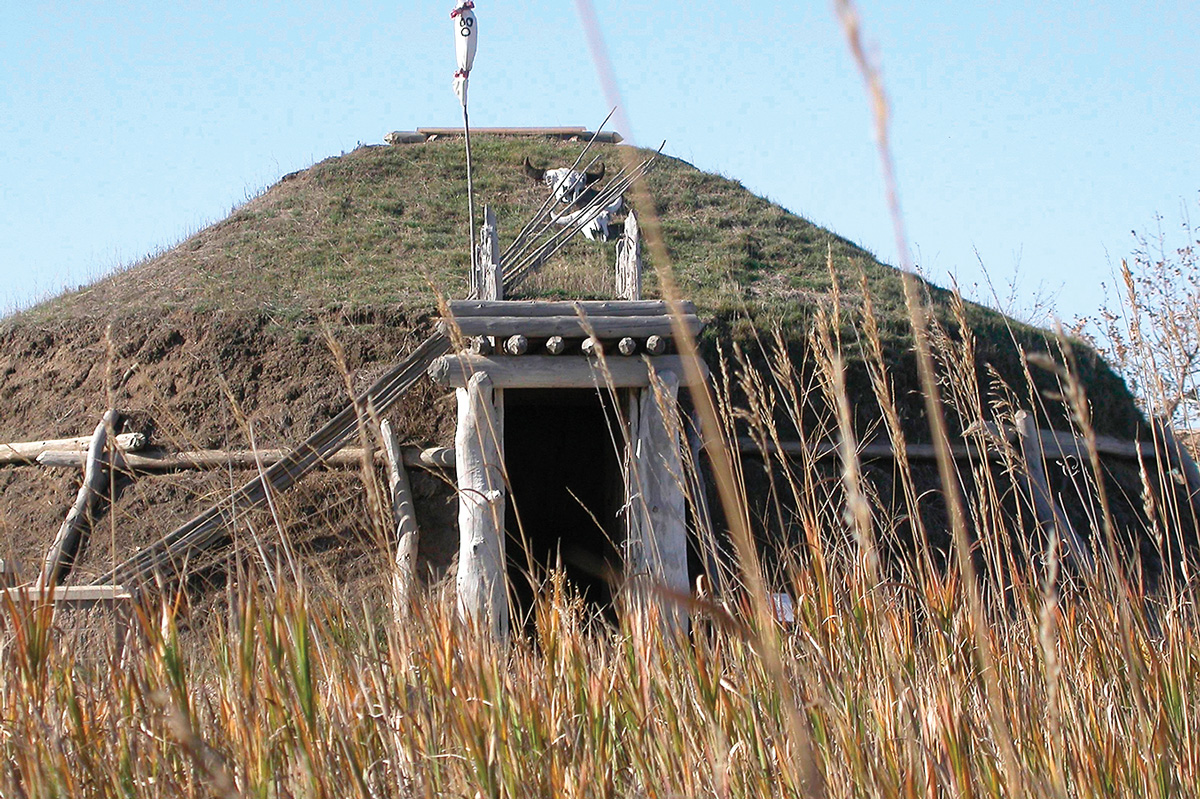
wintered in 1804-05 has been reconstructed at Knife River Indian Villages
National Historic Site near Bismarck, North Dakota.
The Lewis and Clark National Historic Trail, at 4,900 miles, is second only to the California National Historic Trail in length. Expanded in 2019 to include the Corps’ organizational origins in Pittsburgh, Pennsylvania, and the route down the Ohio and Mississippi rivers to its starting point at Camp Dubois, the Lewis and Clark is one of the grandest of American road trips. For many heritage travelers, the opportunity to follow the trail of Meriwether Lewis, William Clark and their Corps of Discovery from the shores of the Pacific in Oregon to the banks of the Missouri and Mississippi rivers in Missouri is a dream come true, even if it has to be done over a few years, rather than all at once. Between Pittsburgh, Pennsylvania, and Seaside, Oregon, the traveler can follow various east or west routes of the Lewis and Clark National Historic Trail for as many days and miles as can be afforded. Fortunately, there is no shortage of historic sites, natural wonders and towns—big and small—ready to accommodate travelers along the trail of the Corps of Discovery.
Highlights Of The Trail
The national trail aficionado will appreciate that the Lewis and Clark NHT also crosses portions of the Oregon, Pony Express, Santa Fe and Nez Perce Trails, as well as countless scenic byways. The National Park Service’s National Historic Trail Center is an excellent place to start a tour of the Corps’ route to the mouth of the Columbia, or visit one of dozens of Lewis and Clark sites between Omaha, Nebraska, and Seaside, Oregon, to plan your route.
The best route planner for your trip is the National Parks’ “Lewis and Clark National Historic Trail” “site (NPS.gov), but do not overlook the importance of the Lewis and Clark Trail Heritage Foundation (LewisAndClark.org) for the latest information on events occurring in communities along the trail.
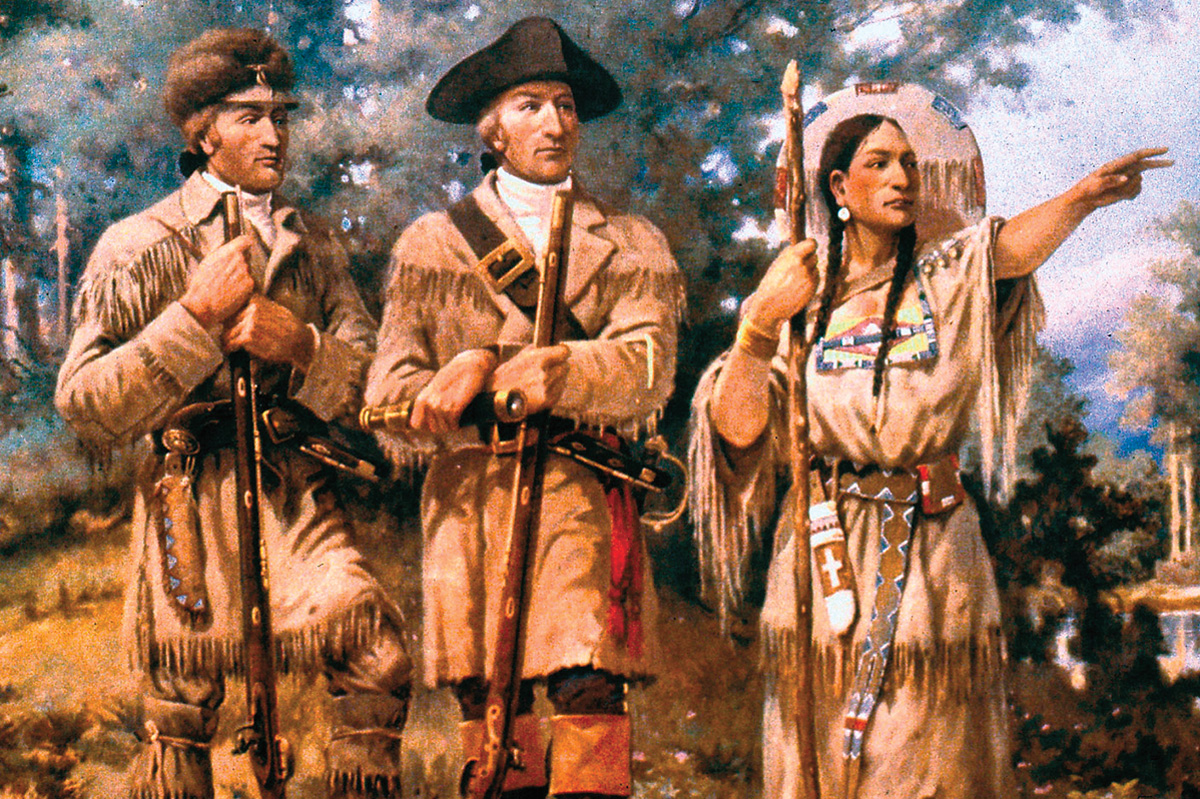
– True West Archives –
Ten Places To Visit on the Lewis and Clark Trail
1. Lewis and Clark State Historic Site, Hartford, IL
The park is a living history center with a visitor center and reconstructed Camp Dubois.
2. Gateway Arch National Park, St. Louis, MO
Don’t miss a tour of the new interactive museum at one of our nation’s newest national parks.
3. Lewis and Clark National Historic Trail Center, Omaha, NE
The Lewis and Clark Trail headquarters serves as the starting point of many travelers’ journey of discovery in the footsteps of the Corps of Discovery.
4. Lewis and Clark Interpretive Center, Sioux City, IA
This significant stop on any Lewis and Clark tour along the Missouri River includes the memorial to Sgt. Charles Floyd, the only member of the Corps to die on the expedition.
5. Lewis and Clark Visitor Center, Yankton, SD
Actually located on the Nebraska side of the Missouri River overlooking Lewis and Clark Lake, the center’s exhibitions tell the story of the Corps, the local tribes and the river.
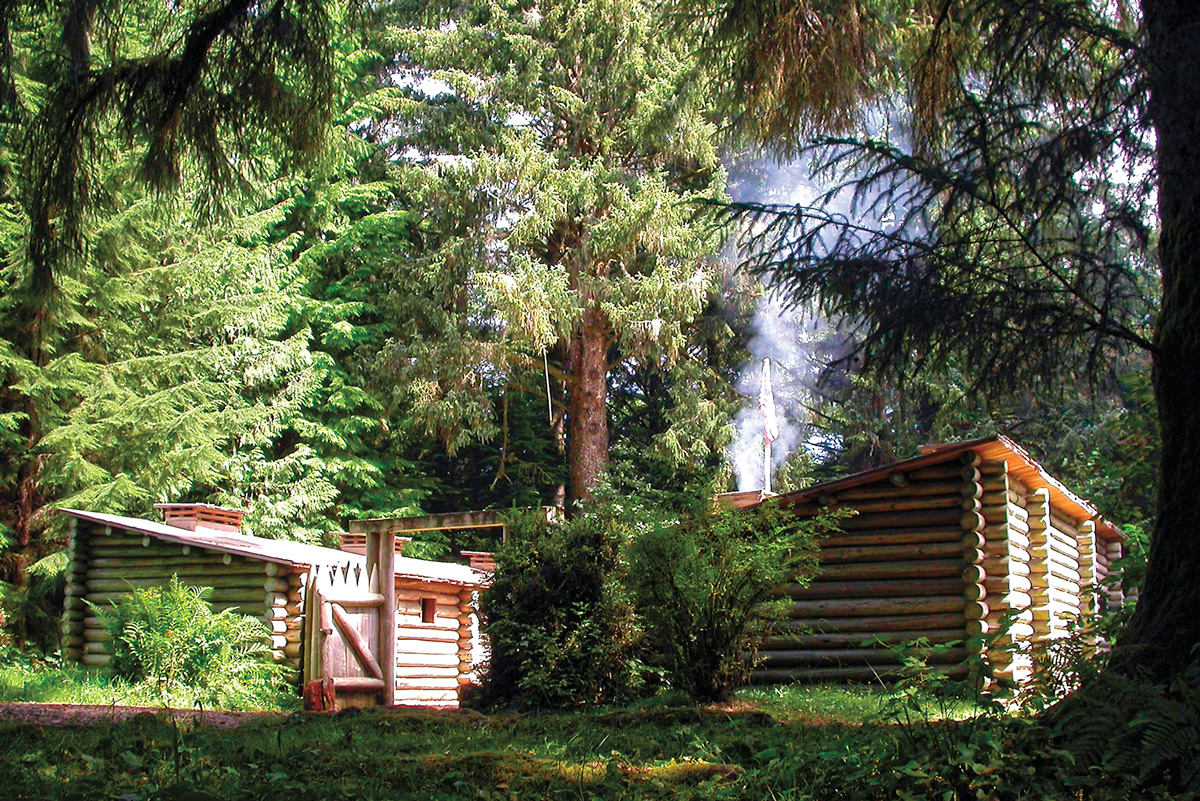
6. Lewis and Clark Interpretive Center, Washburn, ND
Near the site where the Corps wintered with the Mandan and Hidatsa people in 1804-05, the center includes a museum, a reconstructed Fort Mandan Village and offers living history programs.
7. Pompey’s Pillar National Monument, Pompey’s Pillar, MT
Twenty-five miles east of Billings, the national monument with an interpretive visitor center protects Capt. William Clark’s signature on a sandstone pillar.
8. The Lewis and Clark Back Country Byway and Adventure Road, Tendoy, ID
The 36-mile loop on a single-lane gravel road takes the traveler on a true adventure into the Salmon-Challis National Forest backcountry to the Lehmi Pass National Monument, where the Corps crossed the Continental Divide from Montana into Idaho.
9. Lewis and Clark Interpretive Center, Ilwaco, WA
High atop Cape Disappointment State Park overlooking the Pacific Ocean, the two-story museum has extensive exhibits on the Corps, their journey to the Pacific and the history of the coastal area of southwestern Washington.
10. Fort Clatsop Lewis and Clark National Historical Park,
Seaside, OR
The reconstructed Fort Clatsop, where the Corps of Discovery spent their winter of 1805-06, is the centerpiece of the park and offers annual living history events with re-enactors.
The Santa Fe Trail
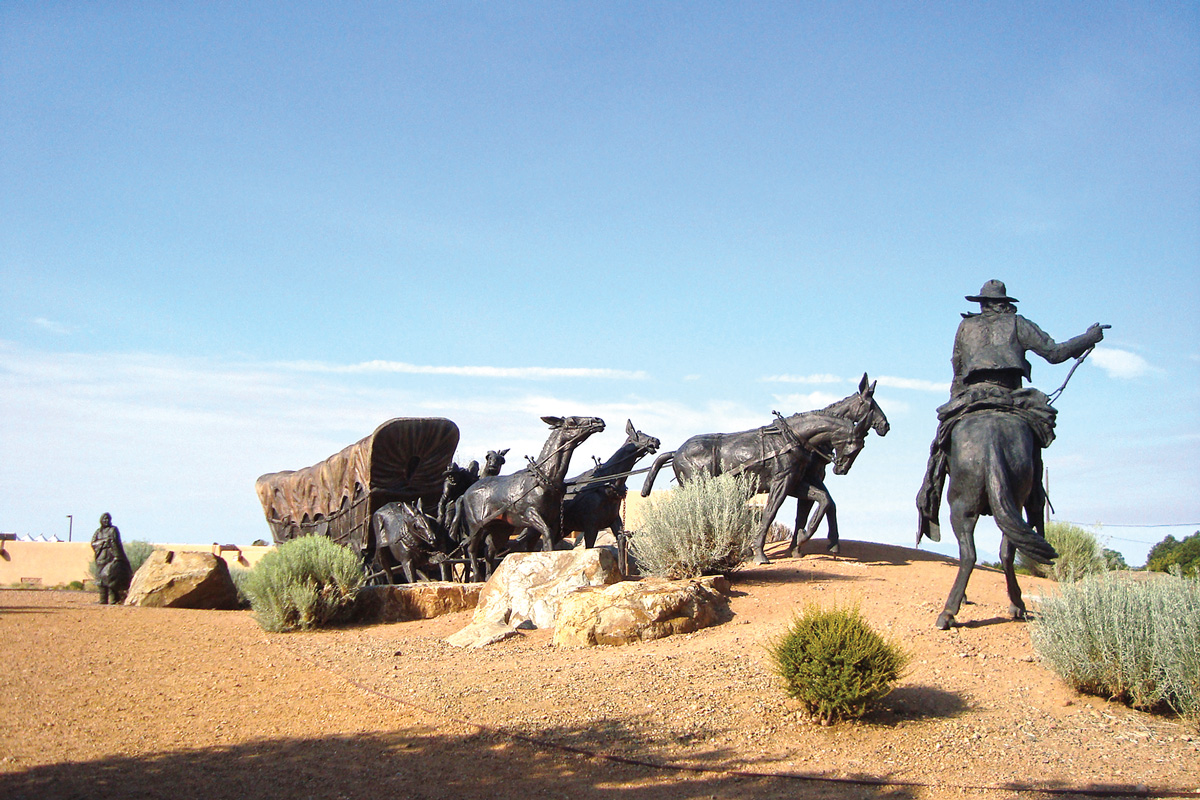
– Santa Fe Trail Statue Photo Courtesy NPS.gov/Caravan Illustration Courtesy Beinecke Library, Yale University –
Santa Fe Trail National Historic Trail
National Trails
PO Box 728
Santa Fe, NM 87504
505-988-6098
NPS.gov/SantaFeTrail.org
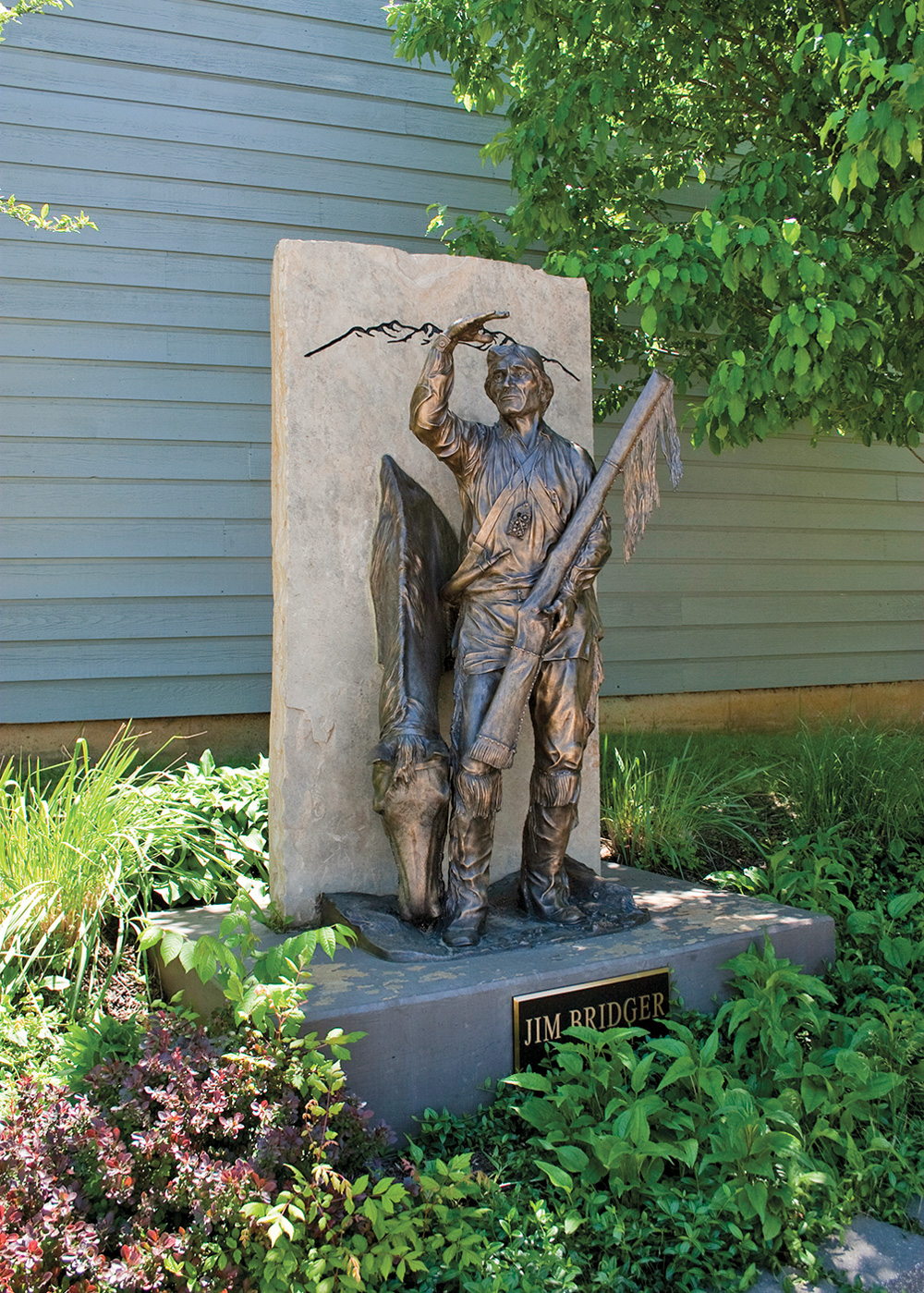
In 2021, the bicentennial of the Santa Fe Trail will be commemorated from Independence, Missouri, to Santa Fe, New Mexico. The famous trade route, first used in 1821 when Missouri Trader William Becknell seized upon the opportunity to open trade with newly independent Mexico, which had just won its independence from Spain. Prior to Becknell, American traders who attempted to open trade with the Spanish state of Neuvo Mexico were arrested and taken to Mexico City. Within a few short years, the Santa Fe Trail became one of the continent’s most important routes of commerce, connecting world trade routes from Mexico City to New York City and New Orleans. The route between the eastern marketplaces and the inland port of St. Louis made it a key commercial, civilian and military route until 1880, when the Atchison, Topeka and Santa Fe Railroad usurped its importance.
In New Mexico, the Santa Fe National Historic Trail connects with the El Camino Real de Tierra Adentro National Historic Trail, the northernmost segment of Spain’s 1,200-mile royal highway from Mexico City.
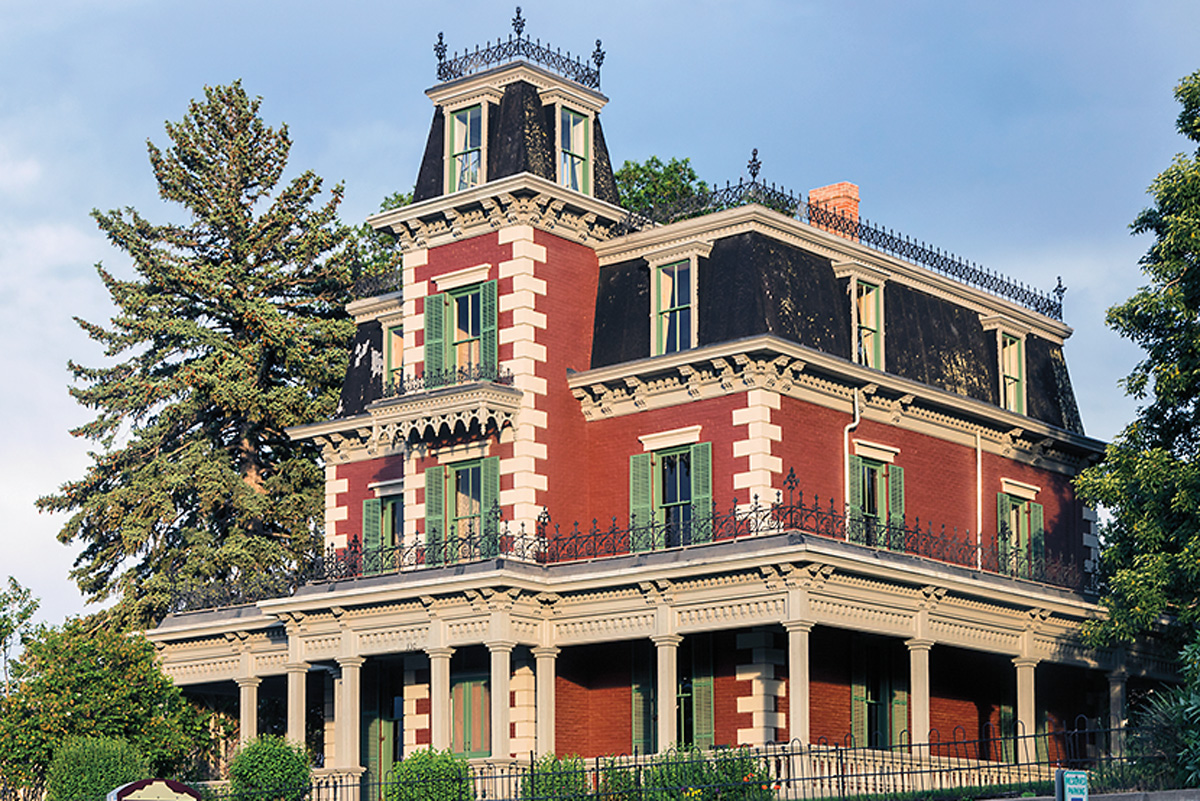
Highlights Of The Trail
Driving the network of US and state highways from Missouri west to New Mexico (or vice versa) will provide the traveler with a wondrous sense of the endless horizon that the pioneers and freighters faced as they traveled across the Great Plains on the Santa Fe Trail. A round trip can include both the mountain branch through Colorado to Bent’s Fort National Historic Site and Trinidad, south through Raton Pass, or southwest through Dodge City, Kansas, on the Cimarron cutoff across the plains of western Kansas, Oklahoma and New Mexico. Both routes lead to Fort Union National Monument, an important way station en route to Santa Fe.
The best route planner for your trip is the National Parks’ “Santa Fe National Historic Trail” site (NPS.gov), but do not overlook the importance of the Santa Fe Trail Association (SantaFeTrail.org) for the latest information on events occurring in communities along the trail.
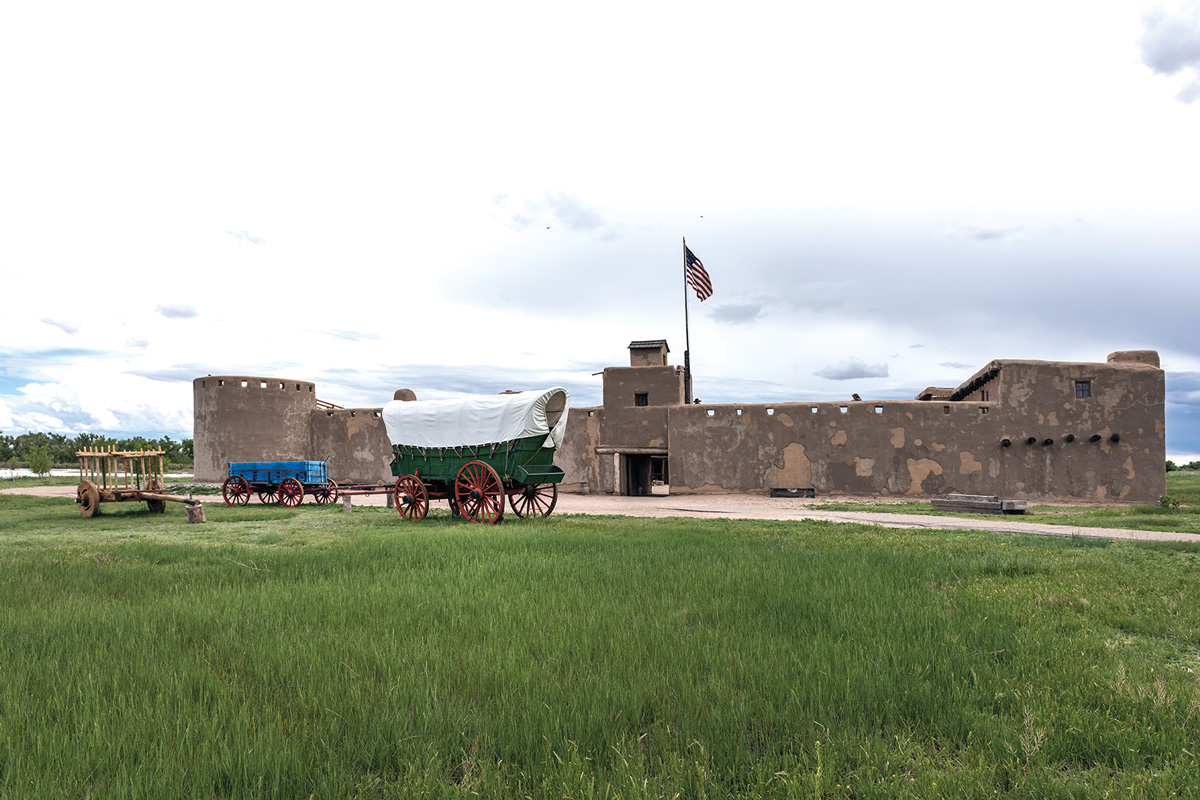
in 1976 as a national historic site and living history center. – Courtesy Carol M. Highsmith Archive, Library of Congress –
Ten Places To Visit on the Santa Fe Trail
1. National Frontier Trails Museum, Independence, MO
Visitors to the museum in the city’s historic district will discover a great introduction to the Santa Fe Trail, as well as the other national trails that started in western Missouri.
2. Historic Council Grove, Council Grove, KS
An important crossroads of the Santa Fe Trail, according to the National Park Service, there are 10 significant sites associated with the trail in Council Grove, including the Neosho Crossing, Council Oak, Hays House and Kaw Mission State Historic Park.
3. Santa Fe Trail Center & Museum, Larned, KS
In the same town as historic frontier Fort Larned National Historic Site, the Santa Fe Trail Center & Museum’s exhibits tell the story of the trail’s history and the settlement of western Kansas.
4. Boot Hill Museum, Dodge City, Kansas
Exhibits at the award-winning center of Western history detail the history of the trail town that was a crossroads of the Old West. Don’t miss the National Park’s Santa Fe Trail Dodge City Ruts site just west of town.
5. Cimarron, Comanche and Kiowa National Grasslands, KS, CO, and NM
When following the Santa Fe Trail across the Southern Plains, take time to stop at one of the national grasslands and enjoy the region’s timeless vistas and endless horizon.
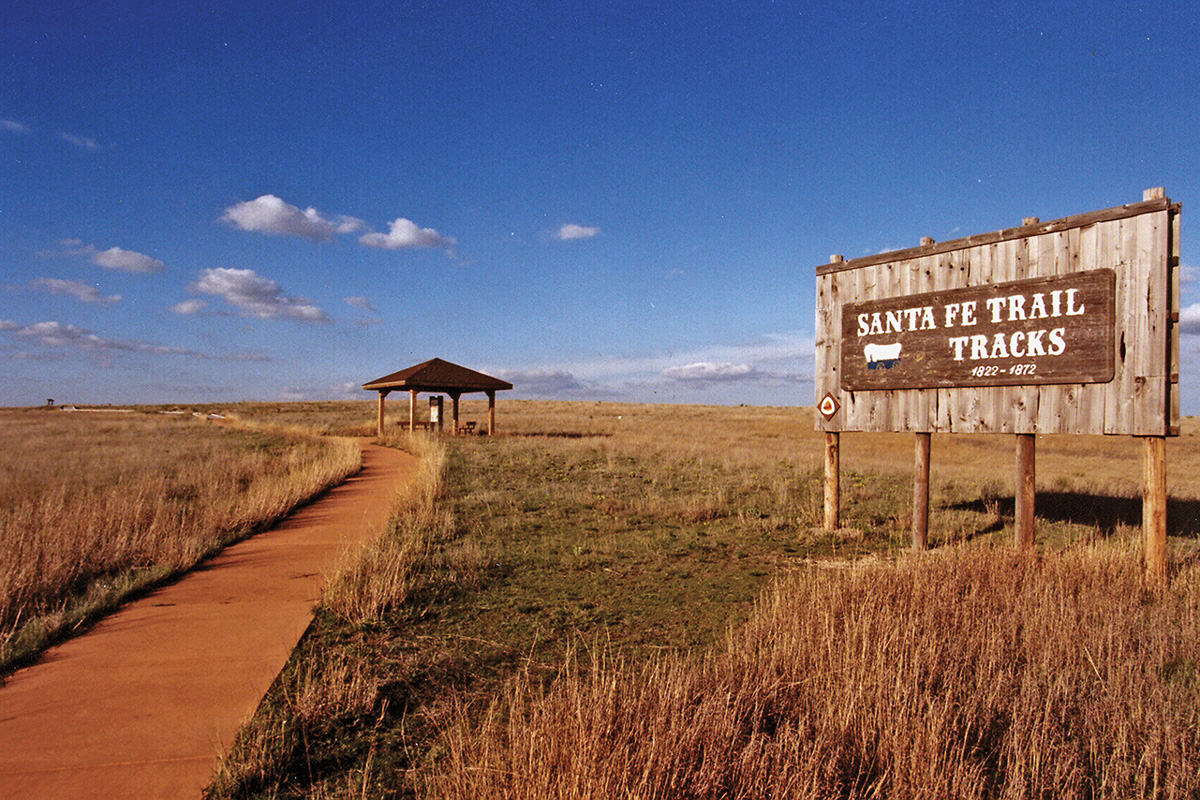
6. Bent’s Old Fort National Historic Site, La Junta, CO
A must stop for Santa Fe Trail travelers going west or east on the mountain branch is Bent’s Old Fort, which was reconstructed from original plans for the U.S. bicentennial in 1976.
7. Trinidad History Museum, Trinidad, CO
Just north of Raton Pass on the Santa Fe Trail’s mountain branch, the museum includes the Bloom Mansion, the Baca House and the Santa Fe Trail Museum. Don’t miss the A.R. Mitchell Museum when in town.
8. Fort Union National Monument, Watrous, NM
Built to protect travelers on the Santa Fe Trail, the fort stands at the crossroads of the trade route’s mountain and Cimarron cutoff branches. Annual re-enactment events bring the fort and history to life.
9. Pecos National Historical Park, Pecos, NM
The Santa Fe Trail passes right through the park in the Sangre de Cristo Mountains. The historical park preserves and celebrates the Pecos Puebloan site as a crossroads of culture in the Southwest.
10. Palace of the Governors Museum, Santa Fe, NM
The historical centerpiece of the oldest capital city in the United States, the Palace of the Governors on Santa Fe Plaza and the New Mexico History Museum should be the first or final destination for heritage travelers on the Santa Fe Trail.
El Camino Real de Tierra Adentro National Historic Trail
PO Box 728
Santa Fe, NM 87504
505-988-6098 • NPS.gov
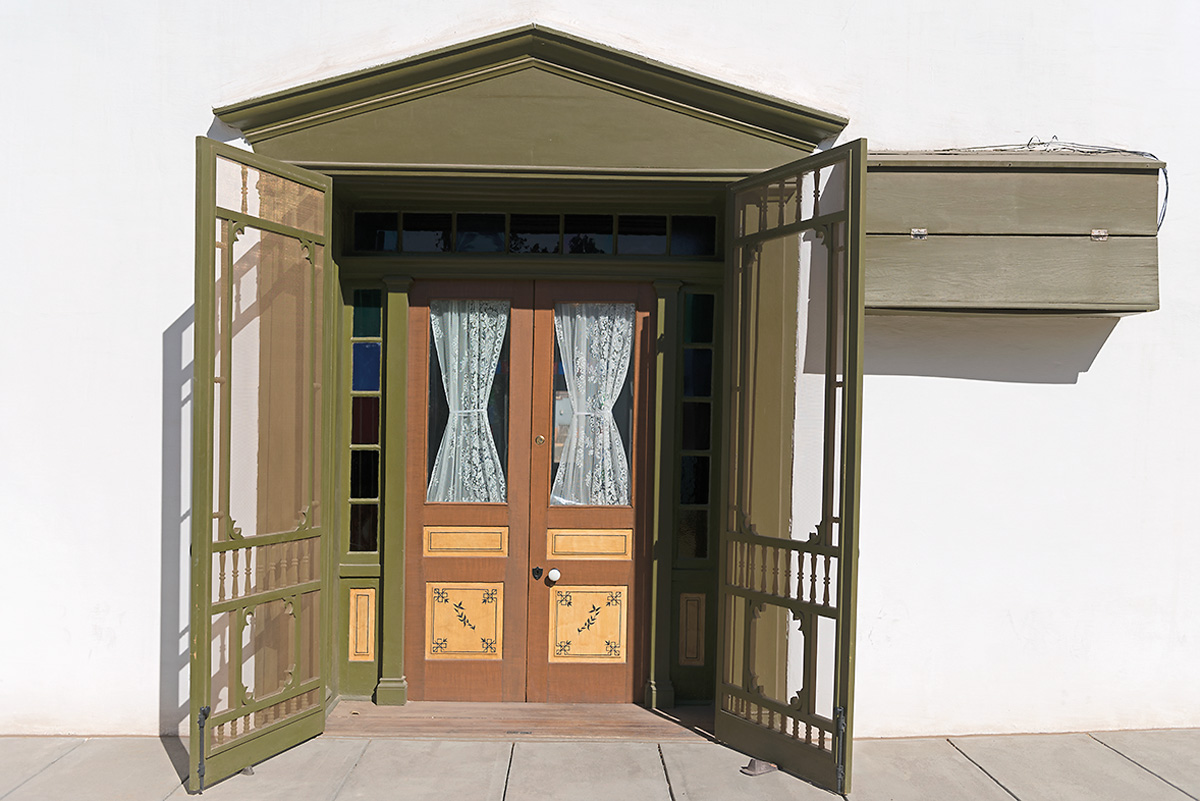
While shorter than many of the national historic trails, the El Camino Real de Tierra Adentro is the oldest historic route in the Western United States. Founded by the Spanish as the northern segment of the royal road between Mexico City and the northern settlements of Neuvo Mexico, the 404-mile historic trail starts in El Paso, Texas, and ends in Santa Fe, New Mexico.
For cross-country heritage travelers on the Butterfield Overland Trail, a secondary trip north from San Elizario and El Paso north to Santa Fe is an opportunity to discover the complex history and cultural heritage of New Mexico. The route travels from the southern Rio Grande Valley through the ranching, farming and mining communities of southwestern New Mexico to the numerous Pueblo Indian cultural sites and towns of the northern Rio Grande Valley. Along the way, the route intersects with the Geronimo Trail National Scenic Byway (GeronimoTrail.com) headquartered in Truth or Consequences.
Geronimo Trail Guest Ranch
An excellent side trip along the El Camino Real de Tierra National Historic Trail and the Geronimo Trail National Scenic Byway is to the Geronimo Trail Guest Ranch (GeronimoRanch.com), south of Beaverhead. Located in the heart of the mountains of the Gila National Forest, the unique guest ranch offers guests the opportunity to immerse themselves in a relaxing, Western experience, with first-class accommodations. Guided trail rides take guests into the canyons and mountains to explore the Mimbres cultural sites adjacent to the ranch.
The Overland Pioneer Trails: Oregon-California-Mormon
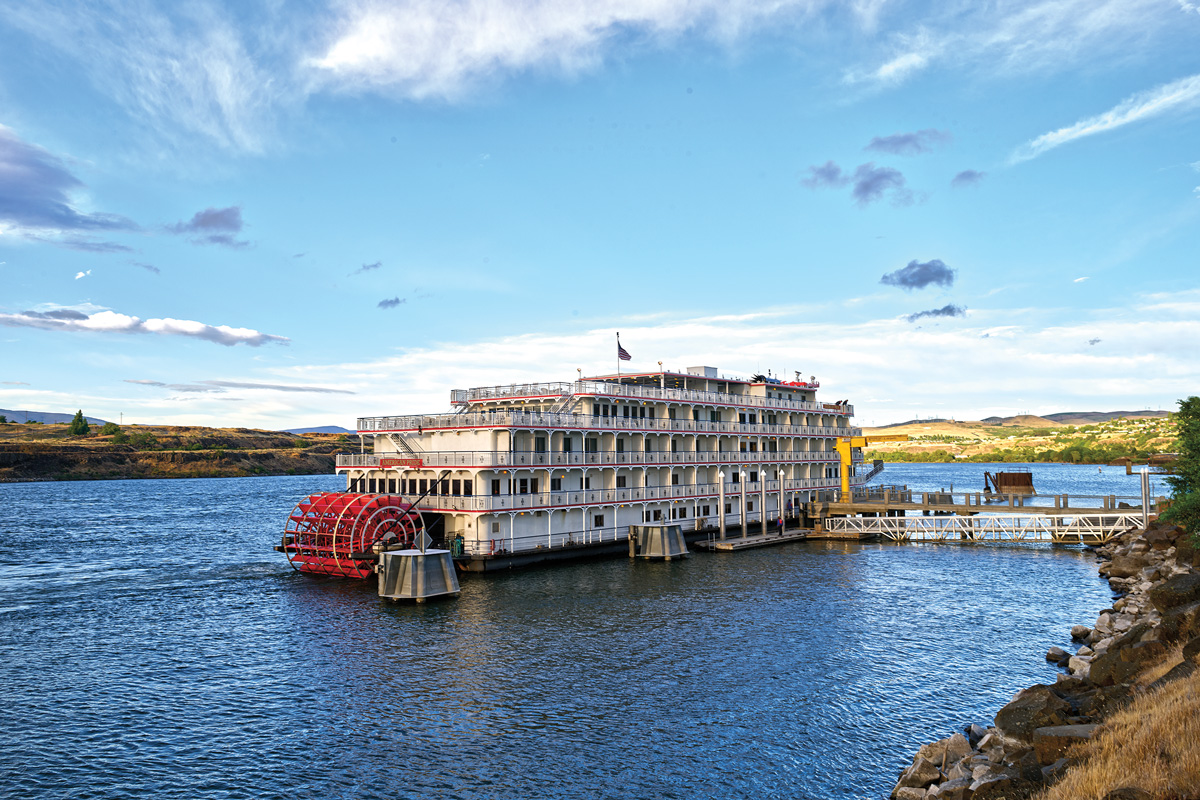
Oregon, California and Mormon Pioneer Historic Trails
National Trails
PO Box 728
Santa Fe, NM 87504
505-988-6098 • NPS.gov
The mountain men and fur traders had crisscrossed the Great Plains, the Rocky Mountains and the Far West on ancient routes of Indian commerce for nearly four decades after Lewis and Clark’s Corps of Discovery returned from their expedition. In 1843, the first wagon train successfully rolled West all the way from Independence, Missouri, to Oregon Territory. The famous Whitman Missionary settlement group had been the first to take wagons over the Rockies, but they had to abandon their wheeled transportation 200 miles short of the Walla Walla Valley. The key to the Oregon Trail pioneers’ success in 1843 was the development of a route over South Pass, the lowest point, at 7,412 feet, along the Continental Divide in southwestern Wyoming. With this crossing point, the Oregon Trail quickly became the “mother road” of Western settlement and Manifest Destiny. Following the Oregon Territory treaty with Great Britain and the Treaty of Guadalupe Hidalgo with Mexico, Western emigration to the Pacific Coast and the interior West increased rapidly. Soon major and minor branches of the Oregon route developed to California and Utah, which are known today as the California and Mormon Pioneer trails. Over the next few decades, more than 400,000 pioneers trekked West to find their bonanza, build farms, start communities and practice their faith in freedom.
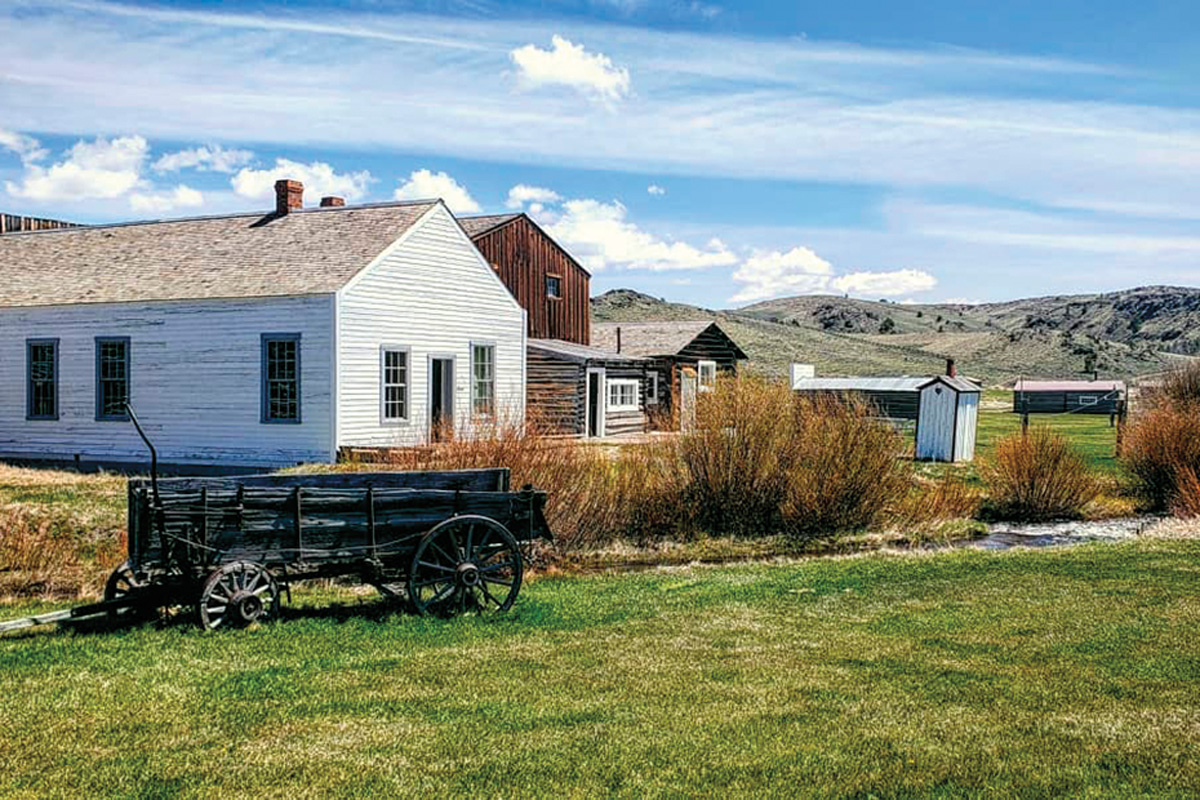
Highlights Of The Trail
Today, heritage travelers seeking to immerse themselves in overland trail settlement history, can follow three National Park historic trails West through the heart of the country—to Oregon, California and Utah—and all points in between. The Oregon and California National Historic Trails begin in Independence, Missouri, while the Mormon Pioneer National Historic Trail begins in Nauvoo, Illinois, crosses Iowa and meets up parallel to the Oregon and California trails.
The best route planner for your trip is the National Parks’ “Oregon National Historic Trail,” “California National Historic Trail” and “Mormon Pioneer Historic Trail” sites (NPS.gov), but do not overlook the importance of the Oregon-California Trails Association (OCTA-Trails.org) or the Mormon Trails Association (MormonTrails.org) for the latest information on events occurring in communities along the trail.
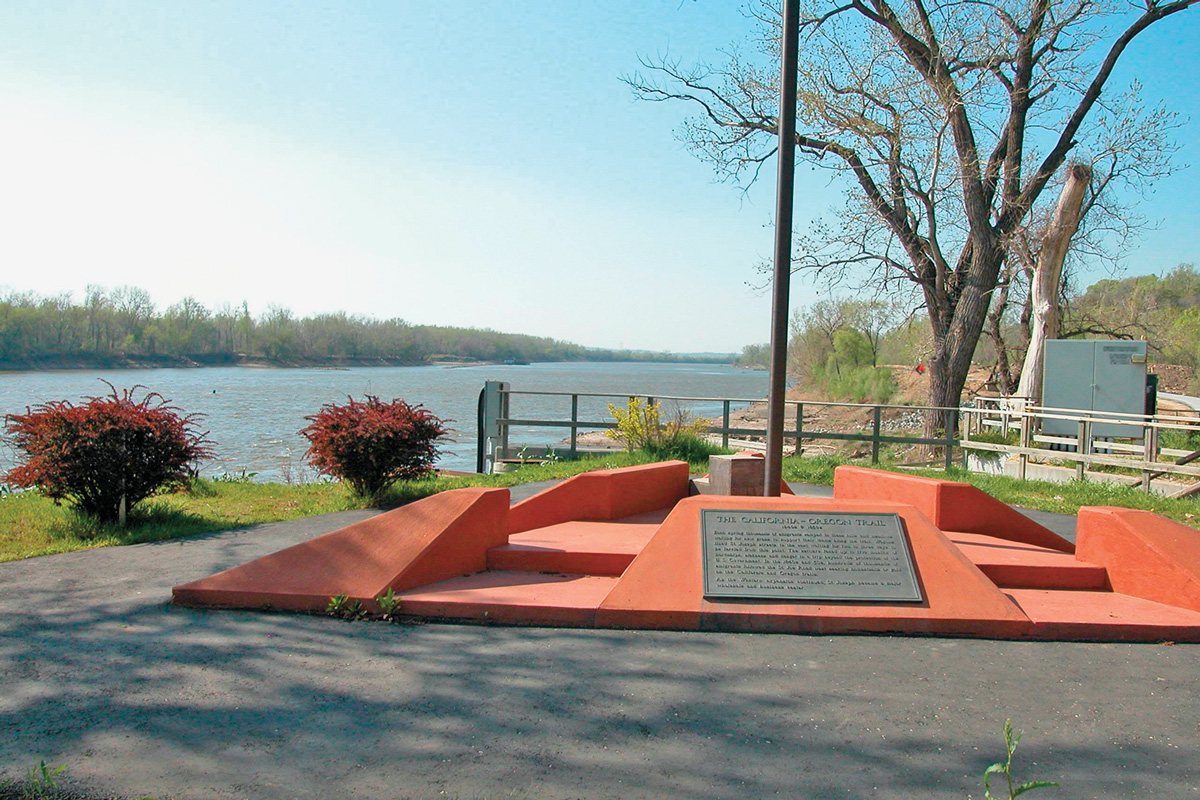
Oregon and California trails. – Courtesy NPS.gov –
Ten Places To Visit on the Overland Pioneer Trails
1. National Frontier Trails Museum, Independence, MO
Visitors to the museum in the city’s historic district will discover a great introduction to the Oregon and California trails, as well as the other national trails that started in western Missouri.
2. Historic Nauvoo Visitor Center, Nauvoo, IL
While the Mormon Pioneer Trail can be followed west to east, the Church of Jesus Christ of Latter-day Saints’ journey west to Utah begins in Nauvoo, and the visitor center is the best place to start.
3. Scotts Bluff National Monument, Scottsbluff, NE
For travelers following the overland trails, Scotts Bluff was visible for miles and a signature landmark of the North Platte River route. The national monument hosts annual living history events, has an excellent interactive visitor center and offers trails and drives from which visitors can experience the park’s natural beauty.
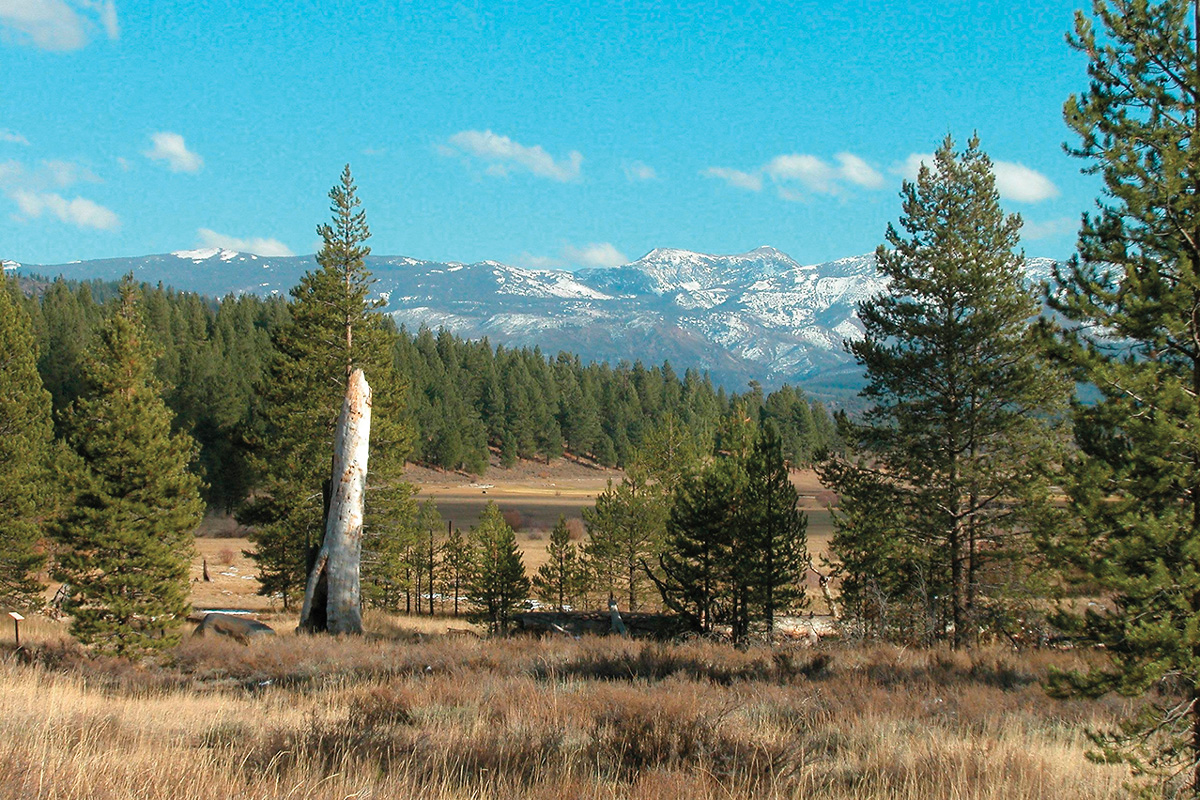
4. Fort Laramie National Historic Site, Fort Laramie, WY
Built in 1834, Fort Laramie was a key stop on the North Platte River for travelers, settlers, traders and soldiers heading east or west on the overland trails.
5. Fort Bridger State Historic Site, Fort Bridger, WY
A key historic crossroads site on the Oregon, California and Mormon trails, the trading post was started by Jim Bridger and Louis Vasquez in 1843.
6. Oregon Trail National Trail Center, Baker City, OR
The Bureau of Land Management’s living history center is dedicated to the heritage of the Oregon Trail pioneers.
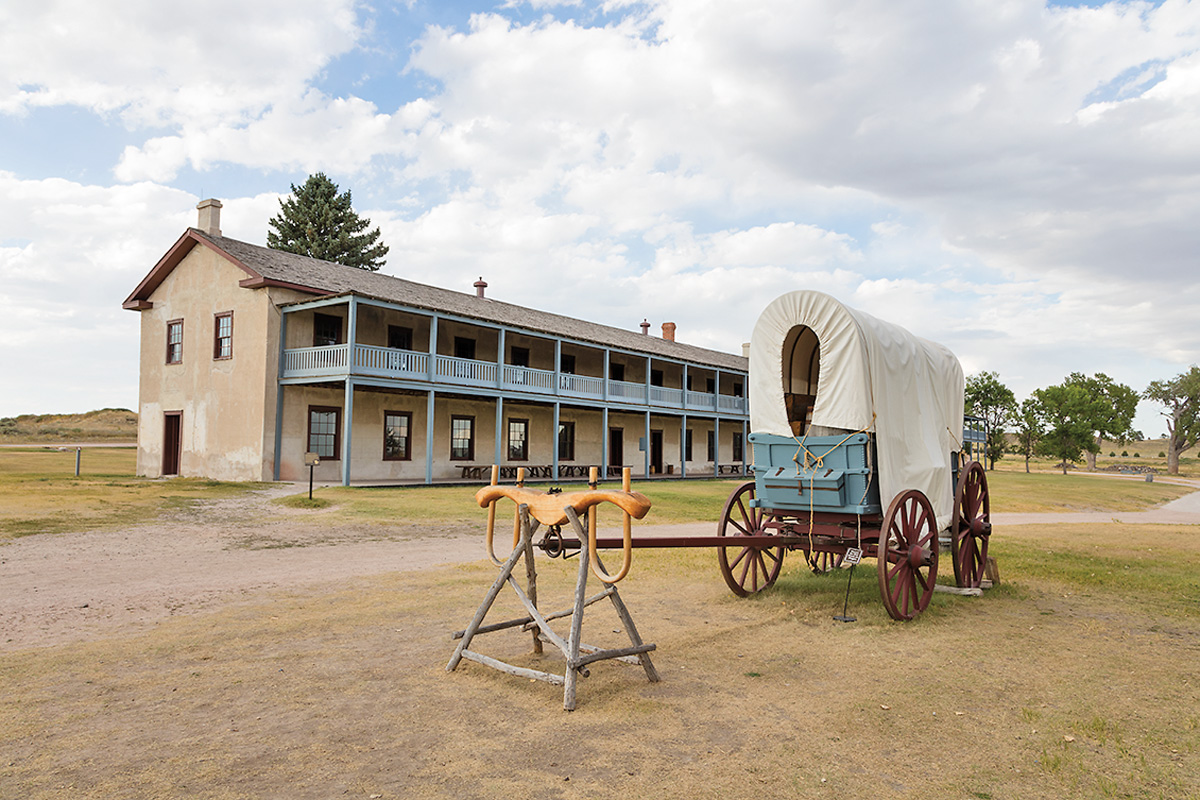
7. This is the Place Heritage Park, Salt Lake City, UT
A living history center near the end of the Mormon Pioneer Trail commemorates the site where The Church of Latter-day Saints’ spiritual leader Brigham Young and the pioneers saw the Salt Lake Valley for the first time.
8. California Trail Interpretive Center, Elko, NV
Visitors to the living history museum will be immersed in California trail history. It’s a must stop for travelers retracing the track the bonanza seekers and pioneers followed to the Golden State.
9. Old Sacramento State Historic Park, Sacramento, CA
Now a museum and entertainment center in the heart of California’s capital city, Old Sacramento was the western terminus of the California Trail. After a tour, schedule time to visit nearby Sutter’s Fort State Historic Park.
10. The Columbia River Gorge Discovery Center, The Dalles, OR
At this critical crossroads of Oregon Trail history, a visitor will be enthralled with the exhibits on the exploration, settlement, cultural and natural history of the Columbia River Valley.
Butterfield Overland Trail
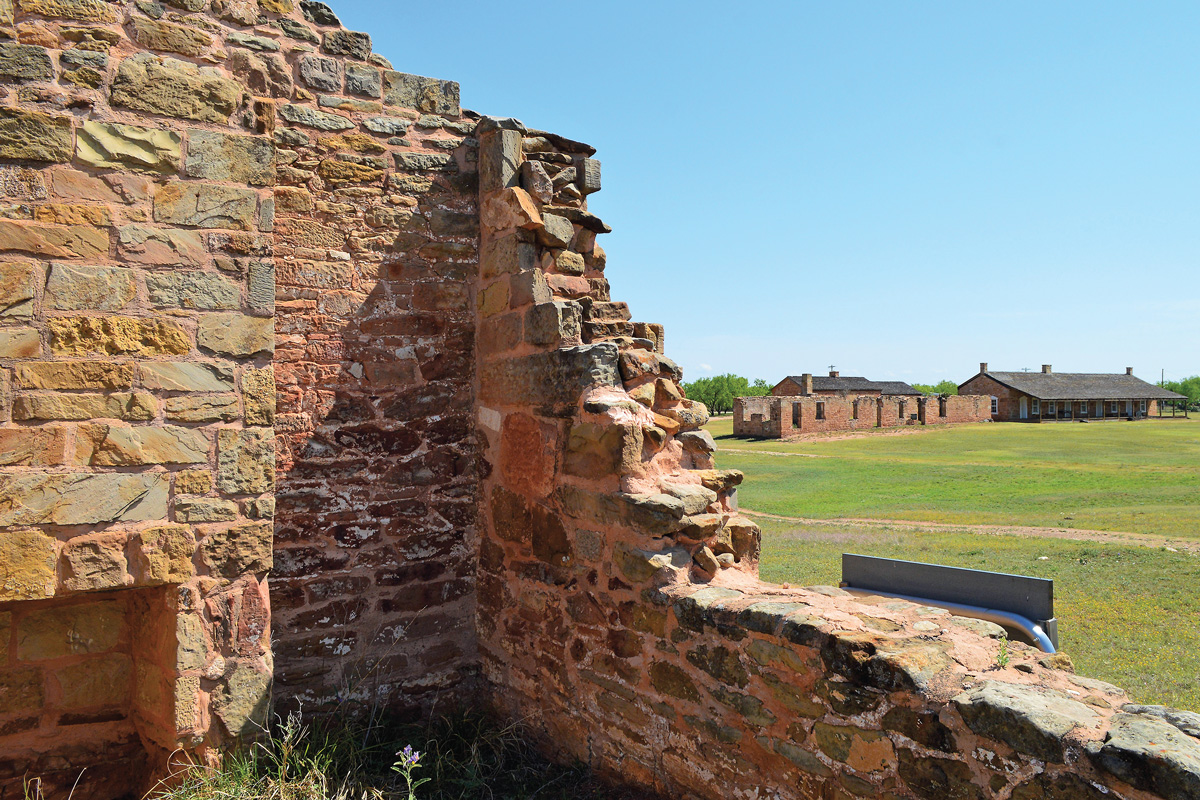
schedule a visit to the museum and grounds of the restored Fort Chadbourne,
an important stage stop from 1858 to 1861. – True West Archives –
Butterfield Overland Trail
National Park Service
National Trails Intermountain Region
P.O. Box 728
Santa Fe, New Mexico 87504
505-988-6736
NPS.gov/ParkPlanning.NPS.gov
John Butterfield was an audacious entrepreneur who had a vision for the first national stage line to carry the mail to California. When he received a six-year mail contract from the United States Post Office on September 16, 1857, he had a year to put his newly formed Overland Mail Company in service from St. Louis, Missouri, and Memphis, Tennessee, to San Francisco, California. He would run 100 coaches of various styles based on road, weather and geography in a great oxbow line across the southern tier of the nation to avoid the snows and guarantee consistent delivery to the mail-starved West Coast.
The rugged 2,795-mile line was challenging at every level for drivers, animals and passengers alike, but no matter the weather or the trail’s condition, the teamsters never stopped for passengers to sleep, and the coaches made the cross-country mail run twice a week in an average of 25 days. The line began with 139 stations in September 1858, and by the time it stopped running in March 1861, there were 175 stations strung out from the Mississippi River to the San Francisco Bay. While John Butterfield was forced to shutter his successful southern line and move his Overland Mail Company to the central route, including the Pony Express, his vision for a well-serviced, national stage line and mail service run like a railroad, forever transformed transportation in the West.
Highlights Of The Trail
Heritage travelers looking for a cross-country adventure in the fall and spring should consider the Butterfield Overland Trail for the same reasons that John Butterfield chose the southern route across the country: mild weather and temperatures perfect for exploring the American South and Southwest. For travelers doing the trail in segments, the Butterfield Overland Trail is definitely four-season, and many trail aficionados love to get off-road and trek over secondary and four-wheel drive roads to sites that can only be reached on foot.
While the Butterfield Overland Trail has yet to be officially designated a National Historic Trail, the process for its approval was introduced in the U.S. Senate in August 2020. For an overview of the proposal for the future “Butterfield Overland National Historic Trail,” go to ParkPlanning.NPS.gov and download Butterfield Overland Trail National Historical Trail Special Resource Study May 2018. In addition, do not overlook the importance of information shared online by the Oregon-California Trails Association (OCTA-Trails.org), the Butterfield Overland Mail Route (ButterfieldOverlandStage.com) and the Facebook sites: Butterfield Overland Trail Friends and Southern Trails Chapter of OCTA. Lastly, contact state, county and city tourism agencies for information on local Butterfield sites and museum exhibitions.
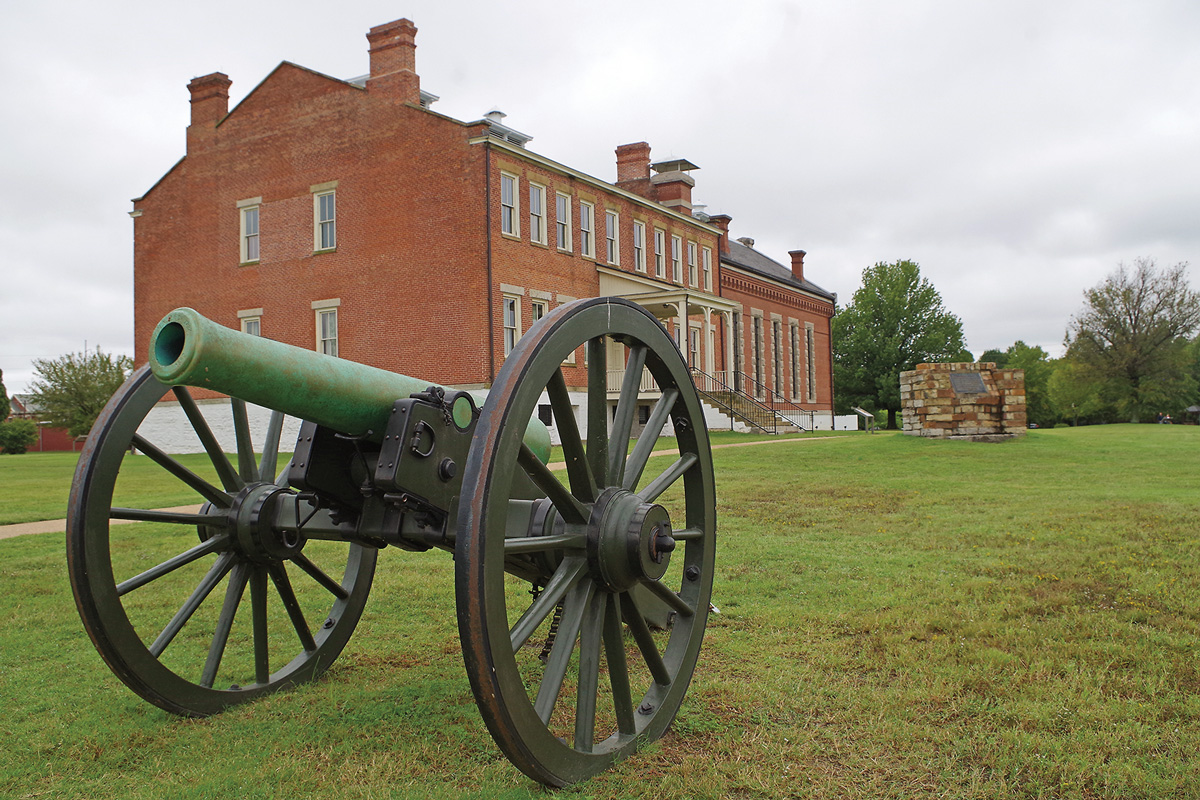
Ten Places To Visit on the Overland Trails
1. Gateway Arch National Park, St. Louis, MO
On the Western frontier, St. Louis was the gateway commercial crossroads city between the East and West. The park’s new museum is an excellent place to learn about Western expansion before following the Butterfield Overland Trail south and west.
2. Fort Smith National Historic Site, Fort Smith, AR
A key crossroad station for the Butterfield stage, Fort Smith was the last stop for drivers before entering the Indian Territory. Schedule time to tour the historic grounds and museum.
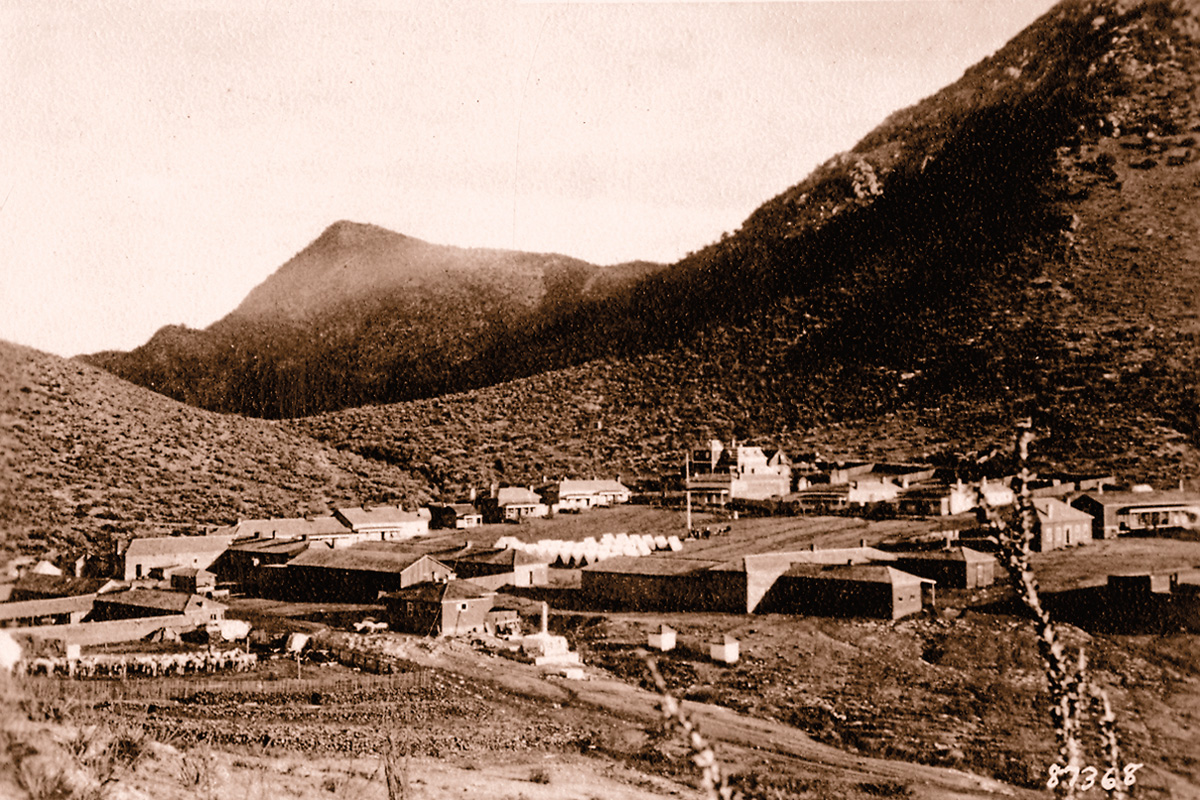
3. The Choctaw Nation of Oklahoma Capitol Museum, Tvshka Homma, OK
The historic route of the Overland Stage went through the Choctaw Nation. Discover the rich cultural history of the Choctaw people through the museum’s exhibits.
4. Fort Belknap, Newcastle, TX
In the 1850s, Fort Belknap was the U.S. Army’s northernmost fort on the Texas frontier. The fort became a key outpost and station crossroads for the Butterfield Overland Trail. Today, Fort Belknap is a public park with a series of reconstructed buildings and a small museum in the Old Commissary.
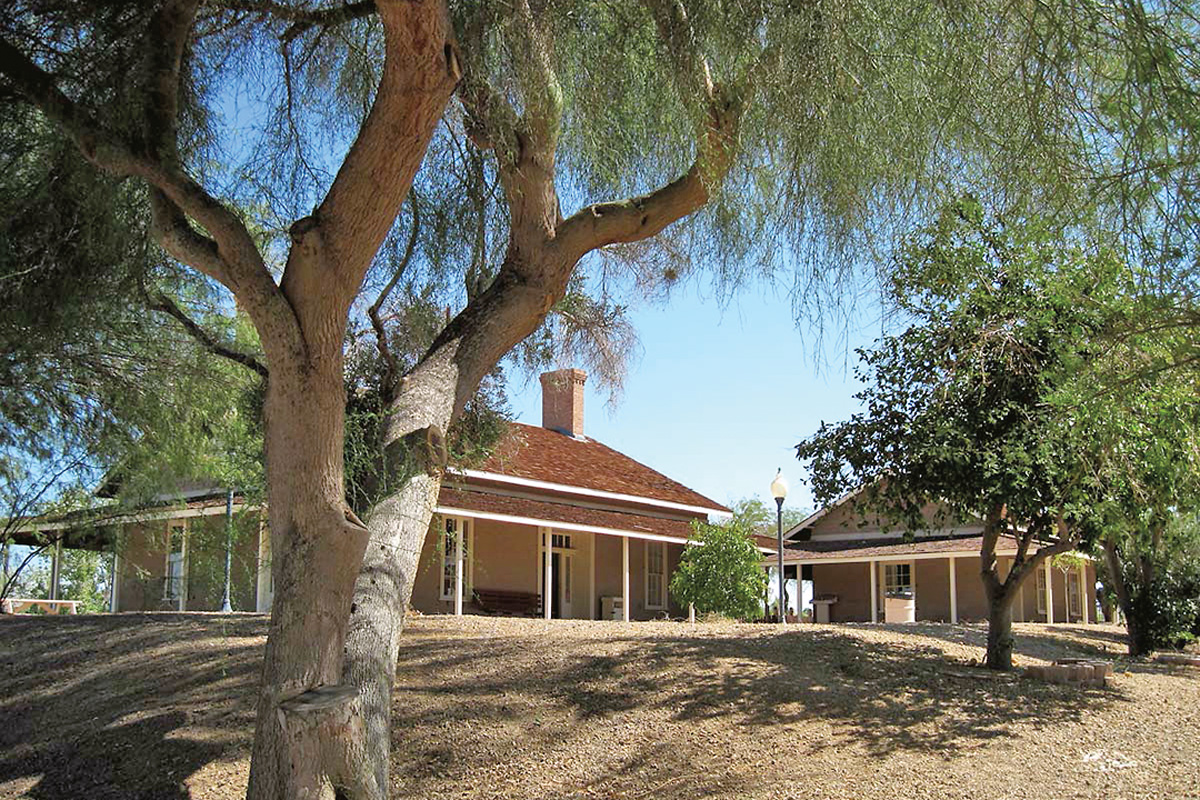
5. Fort Chadbourne, Bronte, TX
Established in 1852, Fort Chadbourne was a key stop on the Butterfield Overland Mail route. The fort today has an informative visitor center, museum and several restored 19th-century buildings.
6. Fort Concho, San Angelo, TX
While Fort Concho and San Angelo had not been founded at the time the Butterfield ran through the Concho Valley, the stage stopped just south of the future townsite. Historic Fort Concho is a living history center that celebrates frontier Texas.
7. San Elizario Historic District, San Elizario, TX
One of the most significant historic districts in the state dates back to the earliest Spanish settlements and its now-restored Presidio Chapel. The Butterfield Overland Mail had a station in the center of town, which today is a private residence.
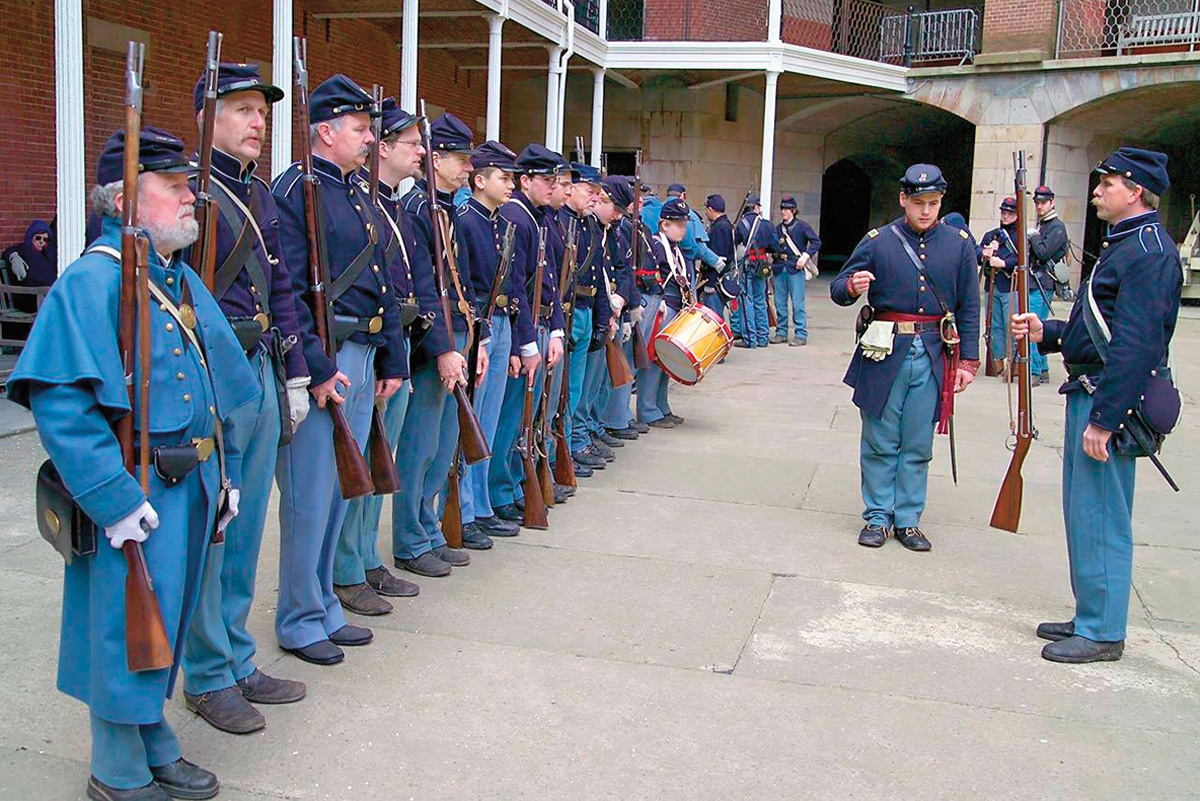
8. Yuma Crossing National Heritage Area, Yuma, AZ and Winterhaven, CA
The Yuma crossing area of the Colorado River, between California and Arizona (in 1858, the New Mexico Territory), was the most important crossroads between Tucson and Los Angeles. The Colorado River State Historic Park is home to the restored Quartermaster Depot, while the original Fort Yuma and stage stop are part of the Fort Yuma Indian Reservation.
9. Autry Museum, Los Angeles, CA
Los Angeles was a key stop for the Butterfield line, and the Autry Museum is California’s premier Western history museum. Don’t miss the Journeys Gallery, which showcases the history of frontier transportation, including stagecoaches in the Golden State.
10. The Presidio National Historic Landmark, San Francisco, CA
San Francisco was the western terminus of the Butterfield Overland Trail, and in 1858, the Presidio was the Army’s primary post in the city. Today it is part of the Golden Gate National Recreation Area, and a perfect place to begin a cultural tour of the city founded by the Spanish in 1776.
The Pony Express National Historic Trail
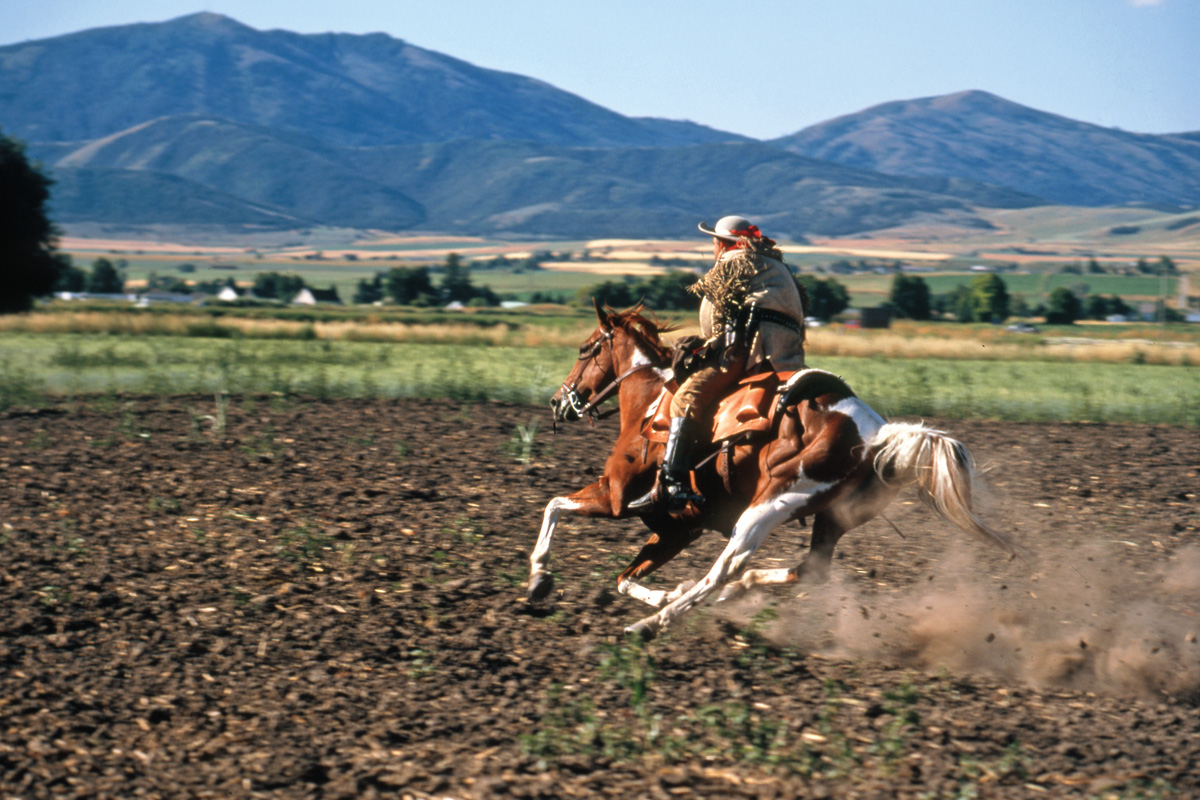
Pony Express National Historic Trail
National Trails
PO Box 728
Santa Fe, NM 87504
505-988-6098 • NPS.gov/NationalPonyExpress.org
The Pony Express flashed into history with the intensity of a comet flying across the night sky, and its legend has captured our imagination ever since. Born out of necessity after the shuttering of the Butterfield Southern Overland Trail because of the start of the Civil War, the Pony Express sent riders at a gallop out of St. Joseph, Missouri, in 1860, intent on keep ing the mail delivered by land to
San Francisco. The amazing result, to all involved, was the delivery of the mail in 10 days, cutting 15 days off Butterfield’s southern overland mail route. And while the famed Pony Express lasted just 19 months, from April 1860 to October 1861, it has become legendary and a permanent part of the mythology of the Old West.
When the national mail service was reorganized in 1858, with an emphasis on the new Southern Overland Trail route, Western freighting entrepreneurs William H. Russell, Alexander Majors and William B. Waddell formed the Leavenworth & Pike’s Peak Express Company, later known as the Pony Express. Soon after the 2,000-mile central Pony Express route was launched from the eastern terminus of St. Joseph, Missouri, on April 3, 1860, the unique cross-country mail service captured headlines and the nation’s imagination. The can-do American spirit of the horse-and-rider service had over 180 stations, 400 to 500 horses and 120 riders under contract. Riders were paid $100 to $150 a month and had to weigh between 100 and 125 pounds. The horses were switched every 10 to 15 miles; the riders were changed every 75 to 100 miles; and 75 horses were used on every one-way trip to deliver the specially designed mochilla, padlocked saddlebags that fit over the saddles to carry the mail. To have an average letter carried by the Pony Express cost $1 to $5, the equivalent to $25 to $130 today.
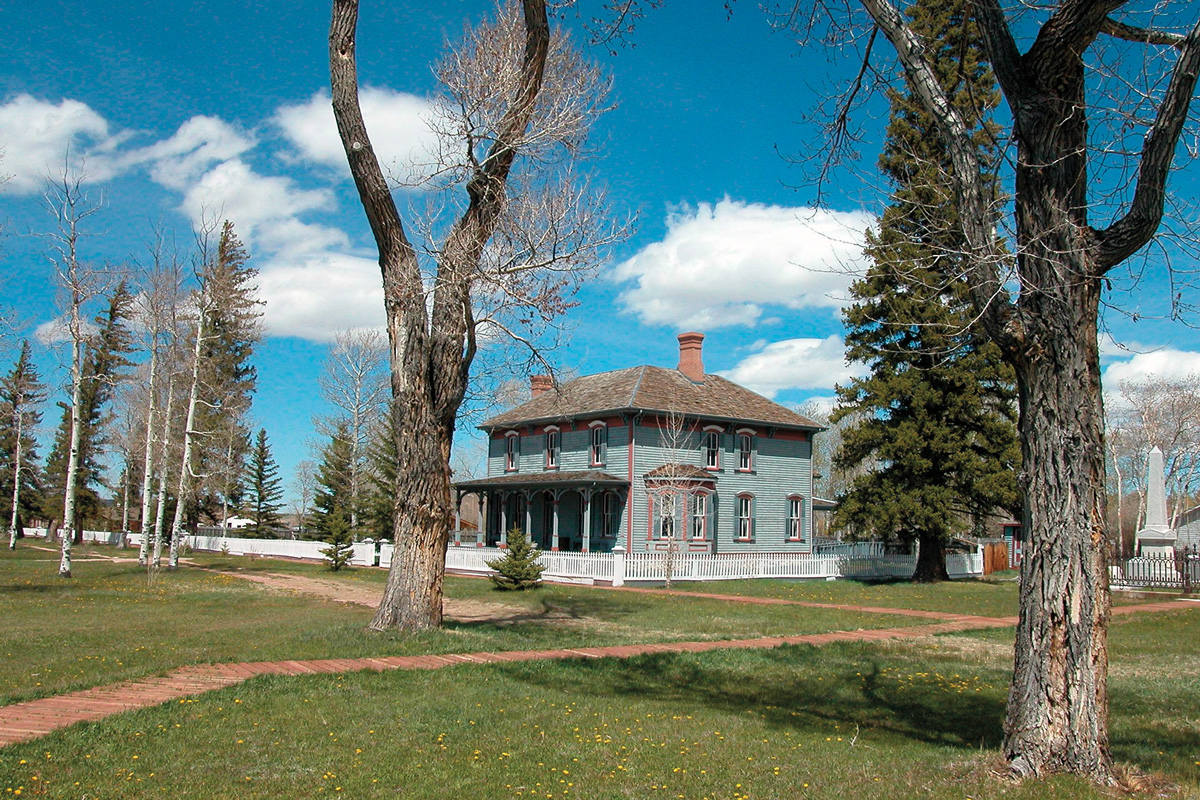
Highlights Of The Trail
Kicking off an east-to-west trip on the Pony Express National Historic Trail should begin at the Pony Express Museum in St. Joseph, Missouri. Travelers heading west to east should start at the Pony Express Terminal in the B.F. Hastings Building in the historic center of Old Sacramento, California. Cross-country travelers will discover that they can actually check off more than one national historic trail when following the Pony Express route across country because from Missouri to California, the route parallels and intersects with the Oregon, California, Mormon Pioneer and Central Overland trails. Late spring, summer and early fall are the best seasons to enjoy driving the route in its entirety, as winter over much of the historic trail can be difficult at best and dangerous at its worst.
The best route planner for your trip is the National Parks’ “Pony Express National Historic Trail” site (NPS.gov), but do not overlook the importance of the National Pony Express Association (NationalPonyExpress.org) for the latest information on events occurring in communities along the trail.
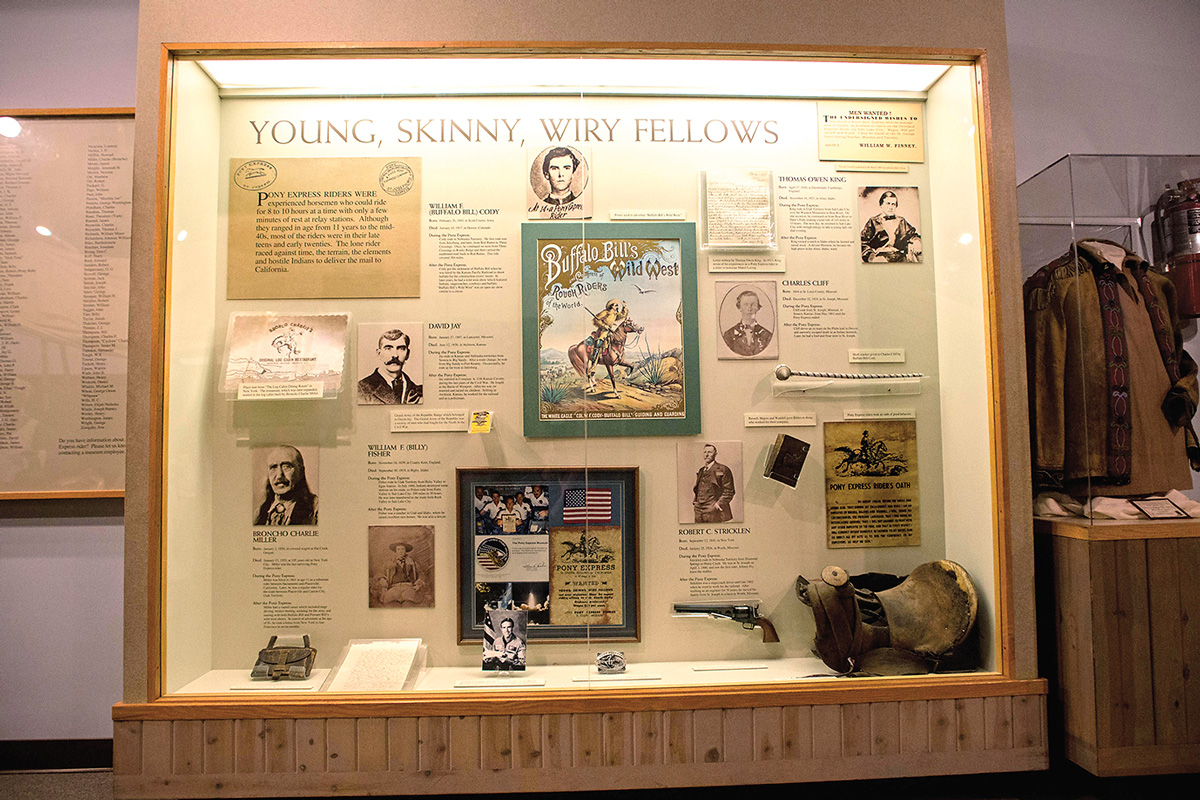
Ten Places To Visit on the Pony Express National Historic Trail
1. Pony Express Museum, St. Joseph, MO
The nation’s premier Pony Express history center, the St. Joseph museum includes the original stables and exhibited material that cannot be seen anywhere else in the country.
2. Pony Express Home Station and Museum, Marysville, KS
The Marysville museum is housed in Joseph Cottrell’s 1859 stone barn, which was the Pony Express’s Home Station #1 on the route West from St. Joseph, Missouri.
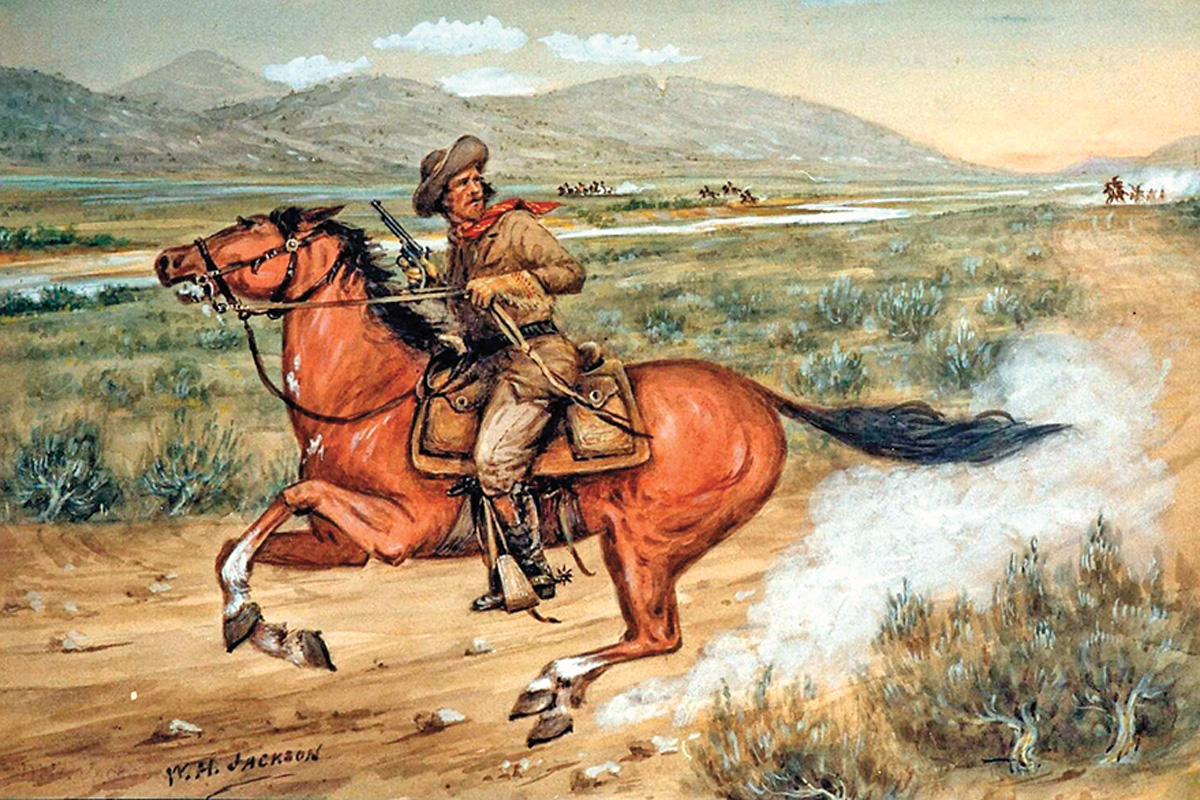
3. Rock Creek Station State Park, Fairbury, NE
An all-important Pony Express station in southeastern Nebraska became infamous as the site of express stock-boy James Butler “Wild Bill” Hickok’s first shootout and killing of Dave McCanles.
4. Fort Kearny State Historical Park, Kearney, NE
Built in 1848 as an Army outpost along the Oregon Trail, the fort had a Pony Express station and was an active post until 1871. The reconstructed fort park includes an interpretive center.
5. Buffalo Bill State Historical Park, North Platte, NE
While it has been proven that young William Cody was not an Express rider, the legendary frontiersman and showman’s Scout’s Rest Ranch is a must-stop on a Pony Express tour.
6. National Historic Trails Interpretive Center, Casper, WY
The Casper, Wyoming, interpretive center has a comprehensive set of exhibits on the Pony Express, Oregon, California and Mormon Pioneer trails that shared the transcontinental road across Wyoming.
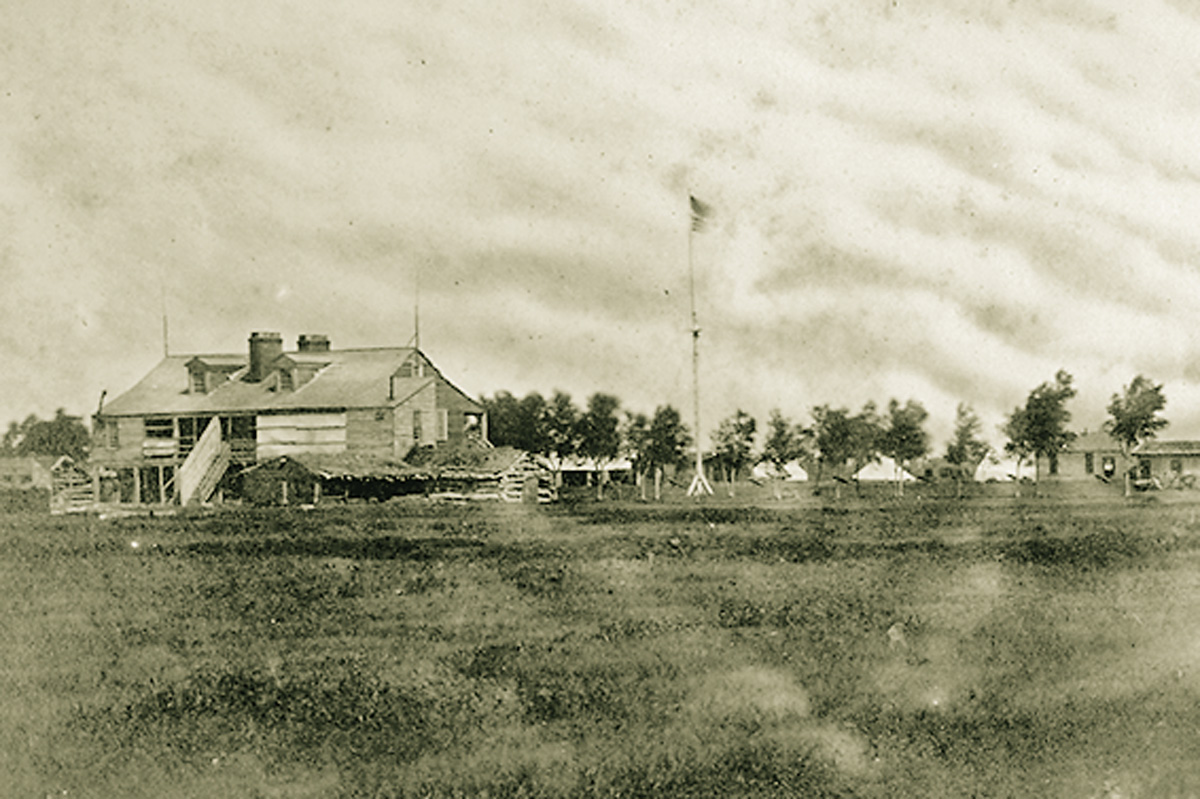
7. The Pony Express National Back Country Byway Visitor Information Site, West Valley City, UT
Check in with the Salt Lake City field office about road conditions (801-977-4300) before taking the well-maintained, gravel byway with interpretive sites along the historic segment of the Pony Express route across Utah’s west desert. Camping is available along the route for a fee.
8. Fort Churchill State Historic Park, NV
Built in late 1860 to protect Overland Trail travelers and Pony Express riders, Fort Churchill was a key stop on the horse-driven mail route. The state park has an excellent visitor center museum and offers a self-guided tour of the grounds.
9. Nevada State Museum, Carson City, NV
Historic downtown Carson City was home to a Pony Express station, and a walking tour of the historic Nevada capital city leads to the Nevada State Museum housed in the landmark U.S. Mint Building.
10. B.F Hastings Building, Old Sacramento, CA
As the western terminus of the Pony Express, the B.F. Hastings building in the Old Sacramento Historic District is a National Historic Landmark and home to two Wells Fargo museums. While on a tour of Old Sacramento, schedule time to visit the district’s many museums, including the California State Railroad and Sacramento History museums.
The Texas Trails: Chisholm, Western, Goodnight-Loving
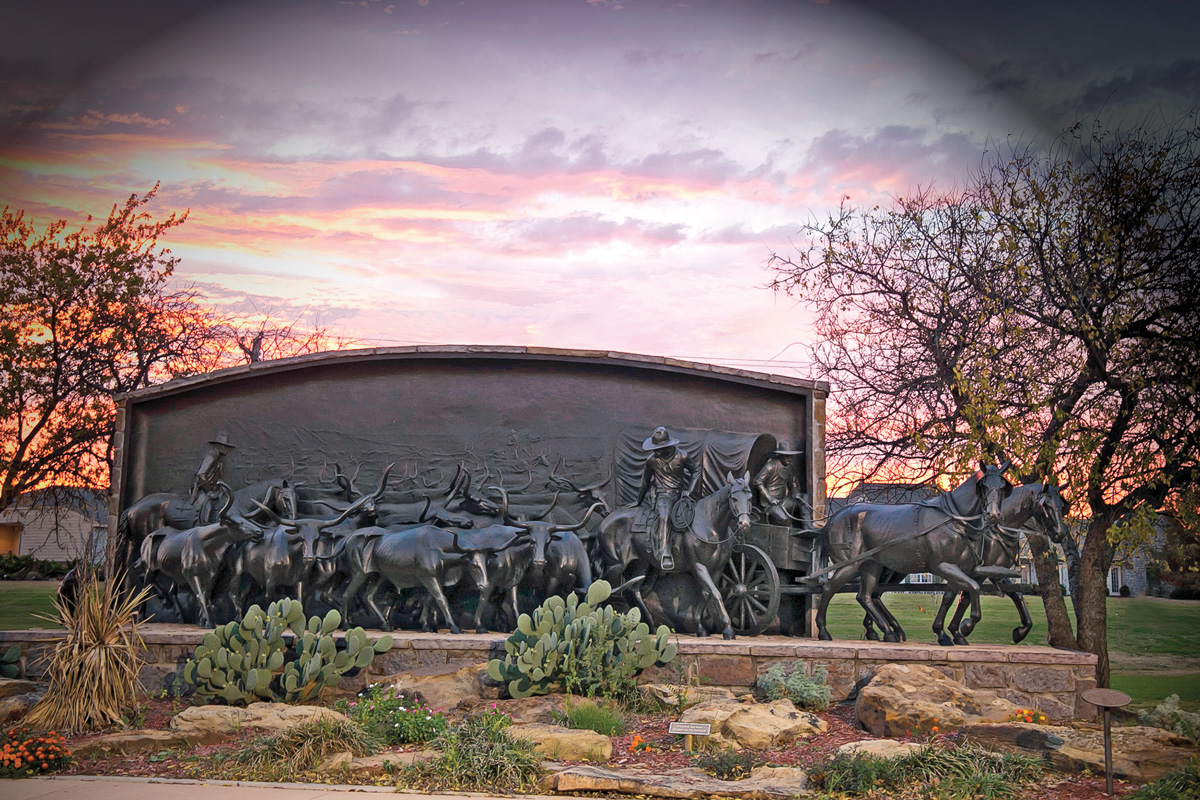
The Texas Trails
National Park Service
National Trails Intermountain Region
P.O. Box 728
Santa Fe, New Mexico 87504
505-988-6736
NPS.gov/ParkPlanning.NPS.gov
Texas cowboys, cattle drives and the cattle trails from south Texas to northern railheads and the cattle-hungry towns and military camps of the interior West have become ingrained in the nation’s history and mythology. Today, more than 150 years since the first great drives up what would become known as the Chisholm Trail from Texas, through Oklahoma to Abilene, Kansas, the trails are well-promoted as tourist routes through the three primary states that the massive longhorn herds passed through.
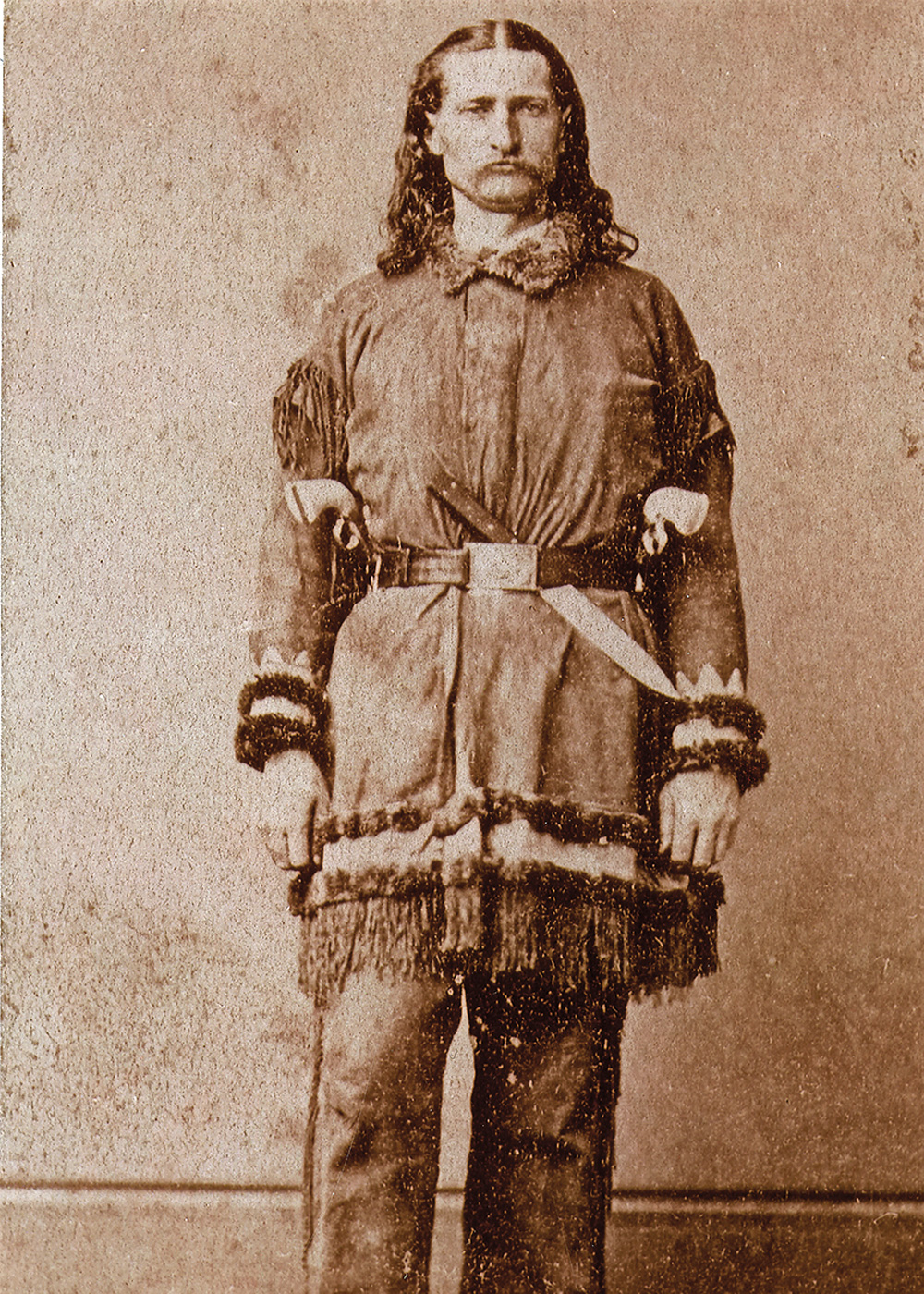
– Photo of Wild Bill Hickok Courtesy True West Archives –
During the Civil War, beef had become a staple of Union soldiers, and following the war, beef became a major commodity for a hungry, quickly industrializing America. The great, wild longhorn herds of South Texas and the Rio Grande Valley border area had swelled into the millions during the war. Returning soldiers and Texas cattlemen realized an opportunity: gather up and claim as many unbranded cattle as possible and drive them north to Kansas railheads. By the end of the century, by some counts, over 27 million head of Texas cattle were driven north to market from the Lone Star State.
Highlights Of The Trail
Following the great cattle trails north from Texas to points north in Oklahoma, Kansas, New Mexico and beyond can consume a lifetime of heritage travel that would start in the Rio Grande Valley near Brownsville, Texas, and go as far north as Montana and Canada. San Antonio, Texas, is an excellent city from which to start any Texas cattle trails tour north to Kansas. From there it is easy to branch off and retrace the Chisholm and Great Western north, following the well-marked and promoted trails to Kansas’s Chisholm Trail cattle towns and the Great Western’s railhead in Dodge City. After a little homework, the Goodnight-Loving Trail can be followed from Fort Belknap, Texas, west and north all the way to Cheyenne. The truly adventurous and dedicated Great Western trail traveler can seek to follow ultimate trek from Mexico to Canada.
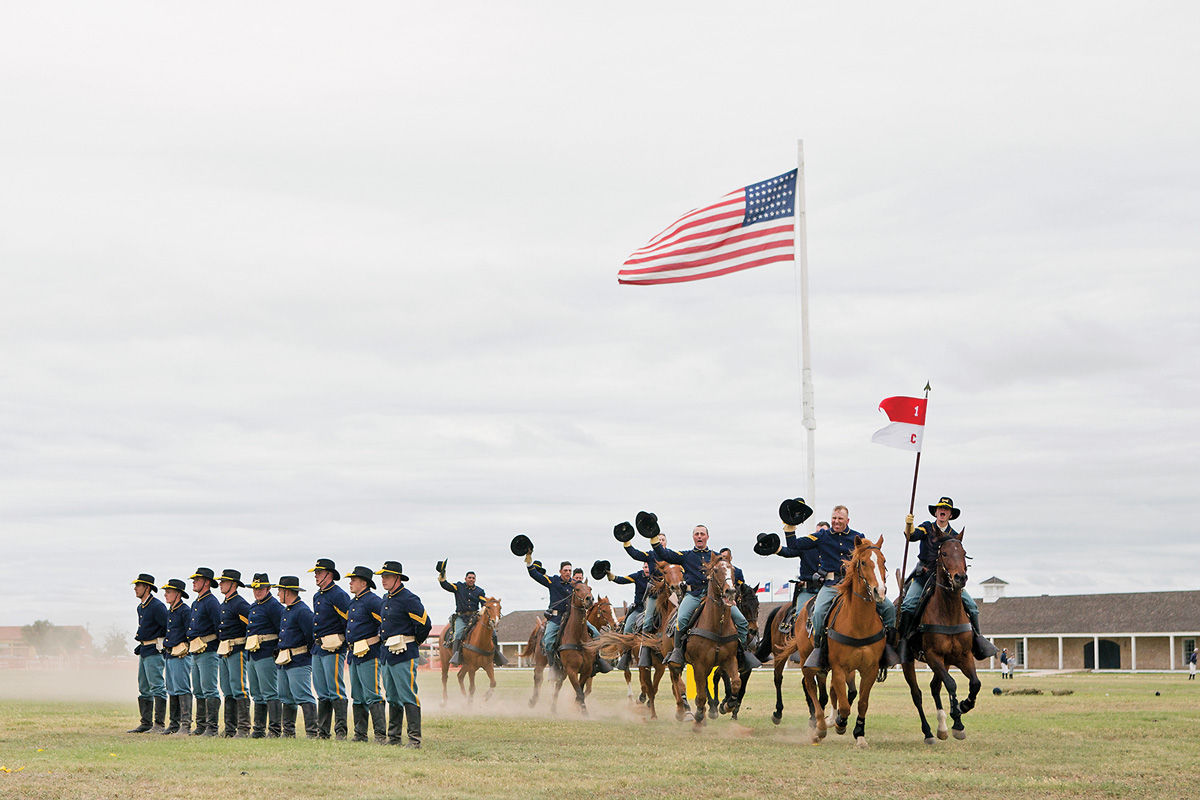
was founded and soon thereafter the town of San Angelo was established.
Today, the historic site is a living history center of frontier military life. – Courtesy San Angelo CVB –
While the Chisholm, Great Western and Goodnight-Loving trails are yet to receive Congressional designation as national historic trails, the Chisholm and Great Western are currently under review by the National Park Service for official National Historic Trail status. For more information, go to ParkPlanning.NPS.gov to read the Chisholm and Great Western NHT Feasibility Study & Transmittal Letters to Congress. The report provides the Texas Trails traveler with details on the proposed official routes and in-depth history of the cattle drovers routes north from Texas to Kansas and beyond. For additional information on planning heritage travel along the cattle routes, the following organizations—in addition to state tourism agencies—provide information on the trails useful for re-tracing the historic routes of the cattle drives: Chisholm Trail Association (ChisholmTrailAssn.com), Chisholm Trail Preservation Society (ChisholmTrail.org), Great Western Cattle Trail Association (TheGreatWesternTrail.com) and the Texas State Historical Association (TSHAOnline.org).
Ten Places To Visit on the Texas Trails
1. Witte Museum, San Antonio, TX
The Alamo City was a major gathering point for the Texas cattlemen driving their gathered herds north from south Texas before pointing their giant herds north to the Kansas railheads. Discover the rich heritage of the Lone Star State cattle and cowboys at the Witte Museum.
2. Frontier Times Museum, Bandera, TX
The hill country cowtown on the Medina River was a key gathering point and trailhead for the Western Trail north to Dodge City. Learn about the “Cowboy Capital of the World’s” role in trail history at the town’s famous Frontier Times Museum.
3. Fort Worth Stockyards National Historic District, Fort Worth, TX
The historic entertainment district and stockyards was the last stop for cattlemen before they drove their herds north to the Red River Crossing and what would become known as the Chisholm Trail.
4. Chisholm Trail Heritage Center, Duncan, OK
The preeminent museum dedicated to the legendary Chisholm Trail has the most in-depth exhibitions on cattle-driving history in the West.
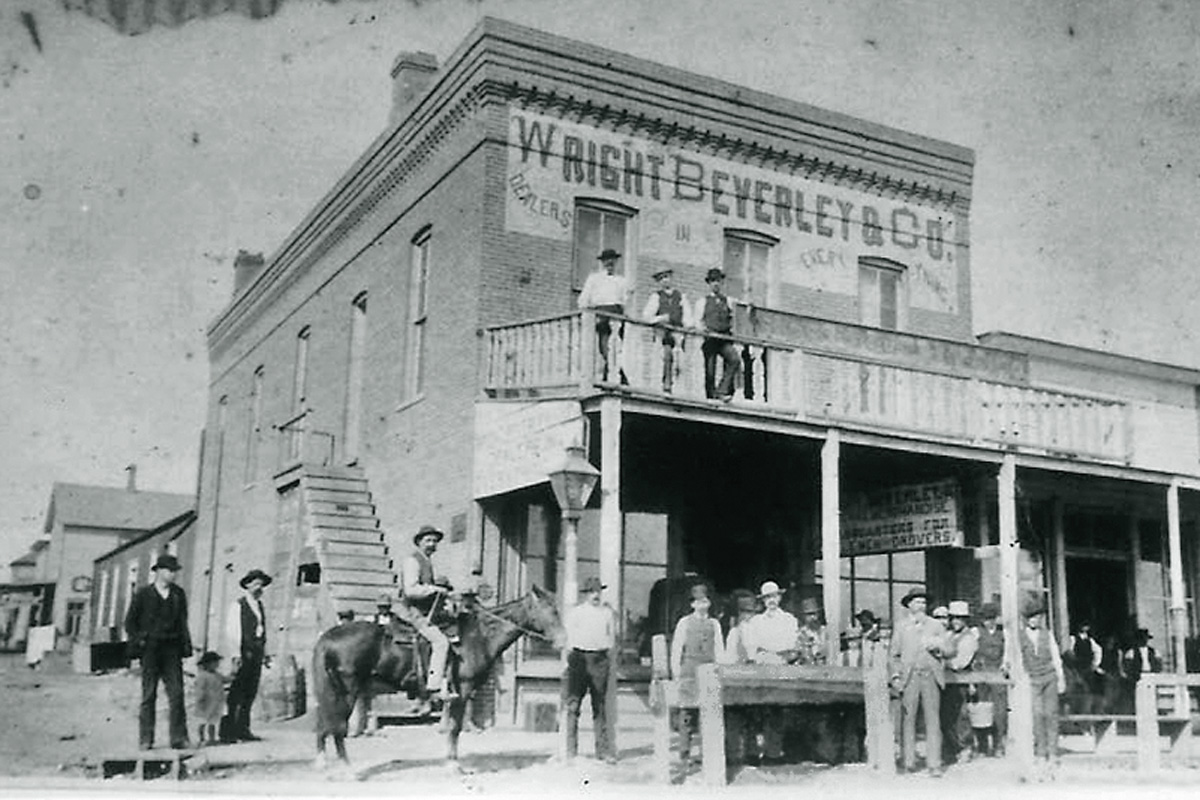
– Dodge City General Store Photo Courtesy True West Archives –
5. National Cowboy & Western Heritage Museum, Oklahoma City, OK
Take a detour of the Chisholm Trail route to visit Oklahoma’s number one museum dedicated to the history and culture of the West.
6. Old Abilene Town, Abilene, KS
Discover at the living history center how Abilene became known as the “Queen of the Cowtowns” after Texas cowboys drove their longhorns north on the Chisholm Trail to the new railhead in Abilene in 1867.
7. Old Cowtown, Wichita, KS
Stroll down Old Cowtown’s Main Street and discover a living history center of 54 historic and reconstructed buildings designed to tell the story of Wichita’s storied history as a cattle town.
8. Boot Hill Museum, Dodge City, KS
The Dodge City railhead became the primary destination for Texas cattle drives up the Western Trail in 1876. Start an Old West heritage tour of the historic cowtown at the legendary Boot Hill Museum and discover how Dodge City earned the moniker “Wickedest Little City in America.”
9. Fort Concho National Historic Landmark, San Angelo, TX
A year before the 1867 fort was founded as a key Army post on Texas’s post-Civil War frontier, Charles Goodnight and Oliver Loving drove their herd through the Concho Valley from the Fort Belknap area before heading West to Fort Sumner, New Mexico, and Denver, Colorado.
10. The Nelson Museum of the West, Cheyenne, WY
Discover the history of how Cheyenne became a major cattle town after Charles Goodnight and Oliver Loving in 1868 extended their Goodnight-Loving Trail north from Denver to Cheyenne, which had become a “Hell on Wheels” railroad construction camp on the Union Pacific.
